Vue lecture
Les traversiers de l’Est canadien, au-delà du déplacement
Parcourir Terre-Neuve, de St. John's à Bonavista
Passeport nouveautés
Kharkiv bleeds daily under Russian fire as €10 billion in damage leaves 160,000 homeless

Kharkiv stands in ruins after Russia attacks. Daily strikes have devasted the city and caused over €10 billion in damage to Kharkiv, Mayor Ihor Terekhov told Report.
Russian assualts on Ukrainian civilians have intensified amid US President Donald Trump’s attempts to settle peace through diplomatic means, leading to a rising number of civilian casualties.
According to the city’s head, Russia has been systematically targeting Kharkiv’s civilian infrastructure for over three years. More than 12,000 sites have been destroyed or damaged, and most of them are residential buildings.
“160,000 Kharkiv residents have lost their homes. Explosions every day, destruction every day, and sadly, deaths and injuries,” says Terekhov.
Thousands of residents are left homeless
The mayor notes that over 9,500 of the destroyed sites are residential buildings, meaning Russian missiles and drones are primarily targeting civilians. Since February 2022, Kharkiv has not seen a single day without shelling.
“Currently, the need for windows exceeds 50,000. Every strike increases this number by another thousand, one and a half, two. The record was more than five thousand in one attack,” the mayor revealed in June.
Reconstruction will require billions
“We are facing massive destruction. The city will need even more funds to rebuild,” Terekhov states, estimating the damage at around €10 billion.
Still, he stressed, “no amount of money can bring back the lives and health lost.”
Terekhov underscored that Kharkiv is under constant attack and that “civilian targets are primarily being hit.”
The scale of destruction and number of victims make it clear: Russia is deliberately devastating Ukraine’s largest city near the border.
Earlier, Russia tested its new modified bomb in an attack on Kharkiv. Children, an infant, and a pregnant woman were among the wounded. A new type of aerial bomb, the UMPB-5, with 250-kg warhead, hit the central part of the city in the first known use of this weapon.
Two airstrikes were launched from over 100 kilometers away. The strikes damaged 20 residential buildings, including 17 apartment blocks in the Shevchenkivskyi and Kholodnohirskyi districts. The blast wave shattered over 600 windows, forming a crater in the street. Seven cars were destroyed by fire, and 18 more were damaged. One industrial facility caught fire, resulting in a large-scale blaze.
Mike Donilon Had $4 Million Incentive to Secure a 2024 Biden Win

© Eric Lee/The New York Times
Satellite images show Kamchatka earthquake tears Russia’s submarine stronghold

A powerful tsunami triggered by a magnitude 8.8 earthquake has reportedly struck Russia’s secret nuclear submarine base in Kamchatka. Satellite images obtained by The Telegraph show severe damage to the pier at the Rybachiy base, a key facility of Russia’s Pacific Fleet.
Satellite images reveal a pier shift after a tsunami strike
According to Umbra Space, one of the docking structures was displaced at a “terrifying angle,” indicating the pier may have been partially torn from its foundation. No submarine was docked at the time of the impact, but the base’s vulnerability raises serious concerns. One image shows a submarine moored at the same pier as recently as 17 July.
The nuclear fleet base, just 75 miles from the epicenter struck by a natural disaster
Rybachiy is located in Avacha Bay, only 120 km (75 miles) from the quake’s epicenter. The base hosts Russia’s newest Borei-class and older Delta-class submarines.
Nearby facilities include Petropavlovsk-Kamchatsky and other strategic military sites.
Although the Kremlin insists the infrastructure is “fully earthquake-proof,” experts warn that even minor pier damage could compromise combat readiness.
Experts question the safety of fleet concentration in one port
Analysts stress that concentrating so many submarines in a single location is a strategic risk.
“This is why having multiple bases is a good idea, because you never know when you’re going to get rogered by something you haven’t seen coming,” said retired Royal Navy officer Tom Sharpe.
He also criticized the pier’s construction.
“It looks classically Russian. Taped on,” he adds.
While Russian sources deny any major damage, the base’s vulnerability to natural disasters casts doubt on the Pacific Fleet’s readiness for emergency scenarios.
Another Russian spy unmasked: National Guard soldier caught leaking secrets on Ukraine defense facility to Russia
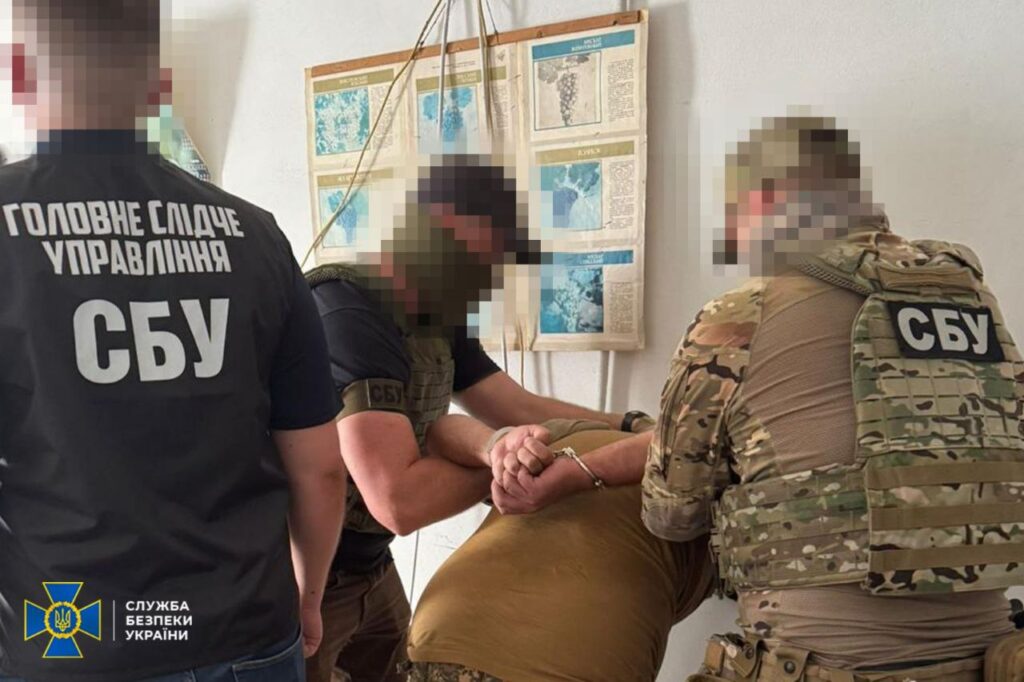
A suspected Russian spy was caught by the Security Service of Ukraine after investigators exposed a National Guard serviceman who leaked secrets about a defense plant. SBU agents said he gave Russian intelligence information about a key Dnipropetrovsk Oblast facility and the unit that guarded it.
Russian spy exposed in National Guard ranks
Ukraine’s Security Service reported on 31 July that it exposed another agent working for Russian intelligence. The SBU said the man served in a National Guard brigade based in Zaporizhzhia. He allegedly sent Russian forces classified data about a strategic defense plant in Dnipropetrovsk oblast. That plant manufactures explosives and different types of ammunition. The mole also passed information about the military unit responsible for guarding the site.
Insider reached out to Russia
According to the SBU, the serviceman had worked at the plant before he was mobilized. Investigators said he personally contacted Russian intelligence and offered them secret information in exchange for money. His knowledge of the site and its security measures came from his previous work there.
Arrest and charges
The SBU, supported by the Ministry of Internal Affairs and the command of the National Guard, documented the actions of the suspected “mole.” Agents detained him after confirming his involvement. Investigators from the SBU’s main investigative department notified the suspect of suspicion under part 2 of article 111 of Ukraine’s criminal code. That article covers state treason committed during martial law. The suspect faces life in prison with confiscation of property if found guilty.
Read also
-
Ukrainian pilot instructor caught selling Western fighter jet secrets to Moscow
-
It wasn’t just the Skripals—Russia’s covert attacks spanned years and continents, UK intelligence reveals
-
SBU: Russian “mole” in Ukraine’s Anti-Corruption Bureau spied for FSB under former President Yanukovych’s security chief
-
Six Russian spies from Bulgaria sentenced in UK to up to 10 years each
Muslim cultural centre damaged in Russian attack on Kyiv
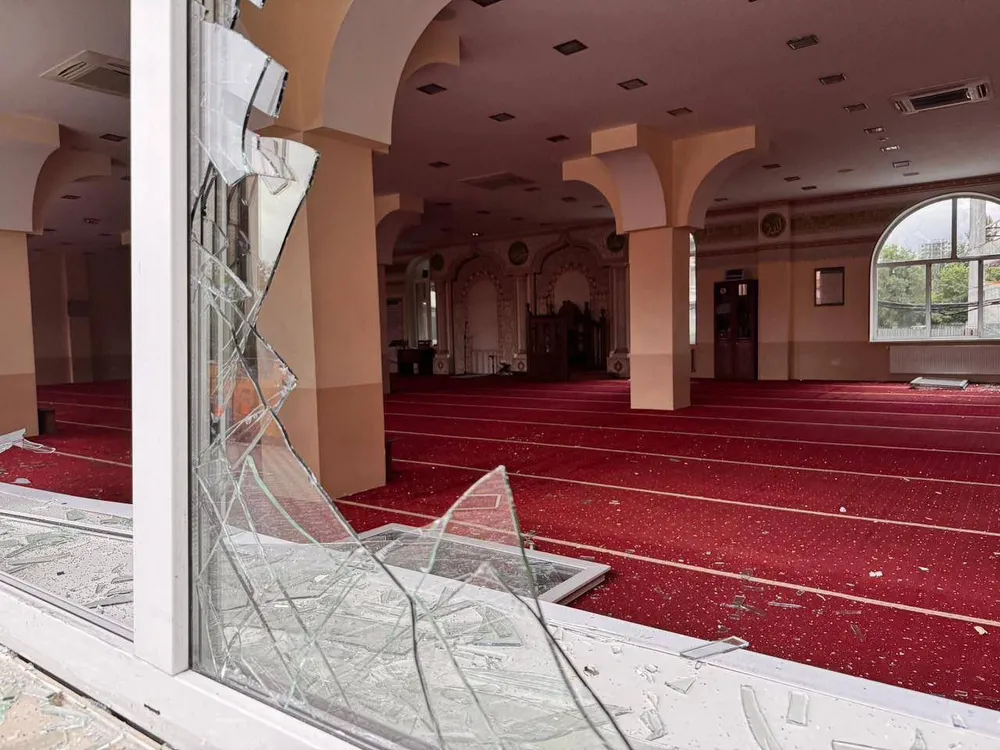
The Russian night missile and drone attack on 31 July damaged the Kyiv Islamic Cultural Centre at one of the capital’s central mosques, Foreign Minister Andrii Sybiha said.
Russian missiles and drones ripped through Kyiv overnight on 31 July, collapsing apartment buildings and setting fires in several districts of the city. The attack killed at least eight civilians and injured over 120 people.
Russian missile struck an apartment building kin one of the Kyiv’s disctrict, collapsing its entire section.
According to Ukraine’s FM, the attack also damaged a cultural center, which served as a gathering place for representatives of various religions and denominations for joint prayers for peace and victory in Ukraine since the start of the full-scale war.
“As a result of another brutal Russian strike on Kyiv this night, the Kyiv Islamic Cultural Centre at one of our central mosques was damaged,” Sybiha wrote. “This is another demonstration that Moscow is waging a criminal war against the very foundations of humanity. Russian terror spares no one.”
Ukraine has called on all Islamic countries, international governmental and non-governmental organizations, and Muslim communities worldwide to condemn the attack, Sybiha said. He emphasized that “Russian barbarism must be confronted with the strength and unity of the world.”
“Together we must force Moscow to agree to a ceasefire and put an end to the war and terror,” the foreign minister added.
The Ukrainian Air Force reported that Russian forces used reactive drones for the second consecutive night in their strikes against Ukraine.
Kyiv’s AI coders take aim at hidden Russia’s killers beneath soil

Ukrainian developers create algorithms to detect explosives from drone imagery. In Kyiv, 13 teams of engineers have built artificial intelligence capable of spotting landmines in drone imagery, a potential breakthrough for demining efforts, the Ministry of Economy, Environment, and Agriculture reports.
As of 2025, Ukraine is the most heavily mine-contaminated country in the world. Due to Russia’s war, nearly one-third of the country’s territory, an estimated 170,000 to 180,000 square kilometers, is considered mined. That’s roughly the size of half of Germany.
A game-changing competition
Over two days in Kyiv, the teams worked on training neural networks to automatically detect explosive objects. The competition, part of the second stage of the AI Data Jam, tasked participants with analyzing 8,000 training images and 23,000 test images depicting mine threats.
Mentorship was provided by experts from UADamage, The HALO Trust, and Dropla Tech.
The goal: a mine-free Ukraine, one meter at a time
“What began as an experiment has grown into a full-fledged project with international backing and tangible results,” says Deputy Economy Minister Ihor Bezkaravainyi.
There’s a huge motivation behind such AI lessons: to create a unique product that can help safely clear Ukraine of landmine pollution, leveraging cutting-edge technology without putting lives at risk.
Victory and deployment ahead
The winning team, MineWatch AI, developed the most accurate detection model. They received $2,000 in support from UNDP Ukraine and the Luxembourg government and the opportunity to further develop the system in partnership with professional demining experts.
All models and datasets from the challenge will contribute to refining AI algorithms. After successful testing, the technology is set to be integrated into humanitarian demining operations, speeding up and safeguarding the clearance of Ukraine’s contaminated lands.
Read also
-
Lithuania selects Ukrainian tech over alternatives to catch Russian drones following airspace violations
-
Ukraine’s tech revolution clashes with Russia’s massive military machine — result will define future of warfare
-
Zelenskyy: Russian missiles and drones still packed with Western tech — and still killing Ukrainians
-
Norwegian sea drone tech to be built in Ukraine to fight Russian navy
China Sees Gaps in U.S. Defenses, Ousted National Security Official Says

© Kenny Holston/The New York Times
Resistance never sleeps: Ukrainian partisans strike Russian rail and freeze ammo convoys
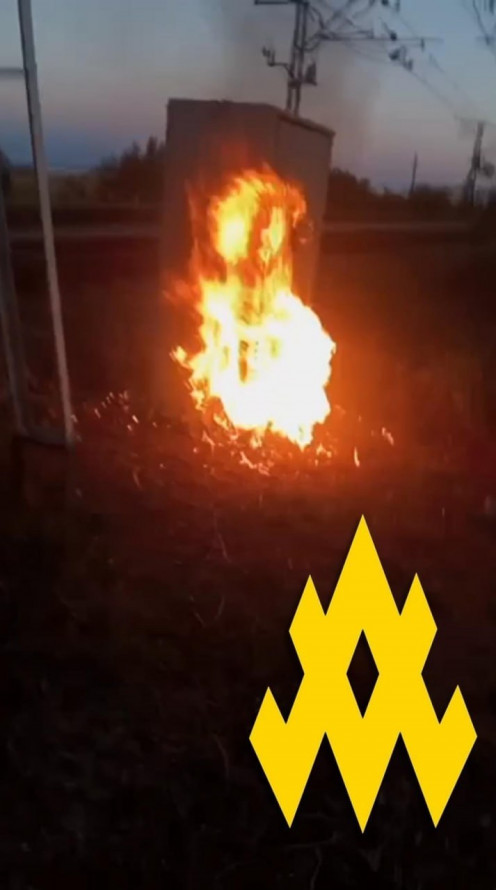
Ukrainian relay sabotage halts Russian supply line in occupied Ukrainian territories. Partisans from the Atesh resistance movement carried out a sabotage operation in Russian-occupied Kherson Oblast, blowing up rail infrastructure crucial for enemy logistics on the Zaporizhzhia front.
Atesh, formed in September 2022 following the start of Russia’s all-out war against Ukraine, claimed to have developed a network of agents within the Russian military. They have also established training courses to instruct Russian soldiers on how to damage their equipment.
Sabotage deep in enemy territory
“A member of the Atesh movement operating deep behind enemy lines conducted a successful sabotage along the railway between Safonove and Novooleksiivka,” the partisans report.
A relay cabinet was damaged, paralyzing the movement of ammunition and fuel trains toward Melitopol, a key logistics hub for Russian forces in Zaporizhzhia Oblast. Moscow troops control nearly 70% of the region, except for the main city – Zaporizhzia.
Russian-occupied Melitopol is gripped by a humanitarian crisis, with water and power outages, drone strikes on high-voltage equipment, mass raids, and repression against locals, according to Glavcom.
Despite this, the residents refuse to back down, memorial events continue in the city, such as those marking the anniversary of the Olenivka tragedy.
“Ah, this one’s dead? Good,” said Russian Olenivka prison chief — and continued sipping coffee
Zaporizhzhia front ablaze
Fighting remains intense, with over 500 Russian attacks reported in a single day, including airstrikes on Stepnohirsk and Novoandriivka, hundreds of drone strikes, and artillery barrages. Ukrainian forces hold the line, especially around Orikhiv, where they continue to repel assaults, says Ivan Fedorov, the region’s head.
The greatest risk in the region remains the Zaporizhzhia Nuclear Power Plant. Due to ongoing shelling of power lines, the facility is frequently forced to switch to diesel generators, posing a real danger of disaster.
Read also
-
Former prison colony head allegedly killed in targeted vehicle bombing in occupied Donetsk
-
“Ah, this one’s dead? Good,” said Russian Olenivka prison chief — and continued sipping coffee
-
Russian soldiers who looted Nova Kakhovka residents vanish as pro-Ukrainian partisans strengthen their network in Kherson Oblast
-
Russia uses thirst as tool of genocide against civilians in occupied Donetsk, says expert
Ukraine’s Intelligence: Russian jet used to train war pilots suddenly bursts into flames in Krasnodar Krai

The Ukrainian Defense Intelligence reports that Su-27UB combat training jet caught fire overnight on 26 July in Russia. The incident happened at the Armavir airfield in Russia’s Krasnodar Krai, which lies more than 850 km from the Ukrainian border.
Russia does not intend to end its war against Ukraine. On the contrary, Russian ruler Vladimir Putin has told US President Donald Trump that military actions will escalate during the summer offensive. In the first half of 2025, Russia killed or injured 6,754 civilians in Ukraine, the highest number for a six-month period since 2022.
The training range on fire
The aircraft was a Su-27UB, a twin-seat training version of the Soviet multirole Su-27 fighter. It is intended for training cadets while retaining the combat capabilities of the base aircraft: speeds of up to 2,500 km/h.
The fighter jet can to carry both unguided FAB-250/500 bombs and guided bombs such as the KAB-500-OD and KAB-1500KR. On the front lines, such aircraft are also used for patrols, air cover, and precision strikes on Ukraine.
Industry geared for war
Moscow plans to increase the production of guided aerial bombs by 50%, to 75,000 units in 2025, by upgrading conventional munitions with planning and correction modules. The installation of the modules turns them into high-precision weapons with extended strike range.
Currently, Ukraine does not have a solution against such missiles. The most effective remains the destruction of fighter jects at airfields.
Sabotage or precision strike?
Following the explosion, local residents reported a loss of communication, which may indicate attempts to conceal the scale of the incident. Ukraine’s Defense Intelligence reminds: “Every crime against the Ukrainian people will be properly avenged.”
Read also
-
Russia plans to boost guided bomb production by 50% in 2025
-
Russian provocateurs try to spark anti-Zelenskyy revolution—Ukrainian media sees through operation immediately
-
SBU: Russian “mole” in Ukraine’s Anti-Corruption Bureau spied for FSB under former President Yanukovych’s security chief
-
Russian drones kill two, injure 15 in Odesa, drone-dropped cluster munition injures woman in Kyiv
This Democrat Wants Cognitive Standards in Congress. Her Colleagues Disagree.

© Kenny Holston/The New York Times
Les jardins botaniques, ces oasis au cœur des villes
Les pays baltes en trois villes et trois jours
La Gaspésie à s'en lécher les doigts
Les Cantons-de-l’Est du côté le moins fréquenté
Passeport nouveautés
Trump’s Trip to Scotland Echoes an Earlier Visit, When He Applauded Brexit

© Tierney L. Cross/The New York Times
Ukrainian hero saves 1,000 vehicles under fire — and surprises Bundeswehr instructor
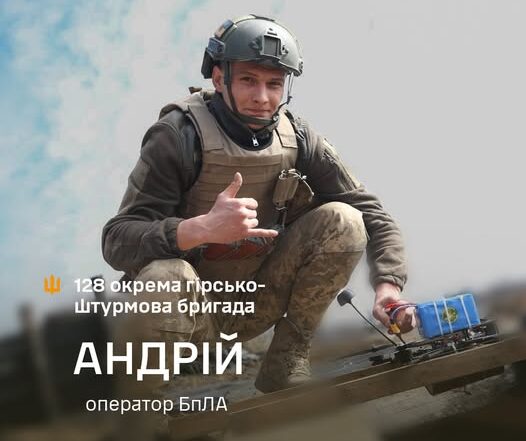
He could leave the war, but he refused. Ukrainian soldier Andrii, 24, from Poltava, is a father of three and a fighter in the drone battalion of Ukraine’s 128th Mountain Assault Brigade. He has pulled over a thousand vehicles off the battlefield: tanks, BMPs, APCs, self-propelled guns, and trucks during his service in the army.
Young men in Ukraine aged 18–24 are not subject to mandatory mobilization into the Armed Forces. The official conscription age begins at 25.
“I’m staying here because I don’t want the Russians to reach my home,” says Andrii, explaining his motivation.
Andrii’s journey began as a conscript and led him to become an FPV drone operator. Initially, he served as a mechanic-driver of a BREM-1 evacuation vehicle, working right on the front lines, under shelling and rain, just 250 meters from the enemy.
“When my comrades jumped off the armor to hook up a vehicle, artillery hit us. One was killed. I survived because I was behind the controls,” he recalls.
“You’re the first I’ve ever allowed to use 4th gear”
For his exceptional courage, Andrii was awarded the Order “For Courage,” 3rd class. Recognized as one of the top mechanics in the Armed Forces, he was sent to Germany to train on the German Bergerpanzer-2 armored recovery vehicle, based on the Leopard tank.
The German instructor was stunned by how experienced and skillful the young Ukrainian soldier was.
“You’re an excellent mechanic-driver. I’ve never let anyone use 4th gear on this vehicle — you’re the first,” he says.
It was a moment where Ukrainian bravery and mechanical precision earned deep trust across allied lines.
The enemy sees him only in their final moments
Today, Andrii operates a fiber-optic FPV drone, navigating into enemy dugouts and capturing every detail. He was trained by Officer Andrii Zadorozhnyi, a hero who was killed in April.
His wife and children wait for him at home. His daughter often calls him right at the front line.
“Ah, you’re in a trench again! When are you coming home?” she asks.
But Andrii answers firmly, “My home is just 200 kilometers from the enemy. I’m doing what I have to do.”
Read also
-
“I want to help Ukraine as much as I can”: American volunteer James joined Ukraine’s Army to build future
-
Western veterans join Ukrainian Army to end unfinished wars from Afghanistan and Iraq, chief of staff of International Legion reveals
-
Texas man joins Russian army to “earn respect,” gets lied to as he is sent to front line instead of welding job
-
Russian soldiers who looted Nova Kakhovka residents vanish as pro-Ukrainian partisans strengthen their network in Kherson Oblast
A Drag Queen Leaves the Stage on Her Own Terms

Ukraine receives $ 399 mn radar package from German defence contractor HENSOLDT
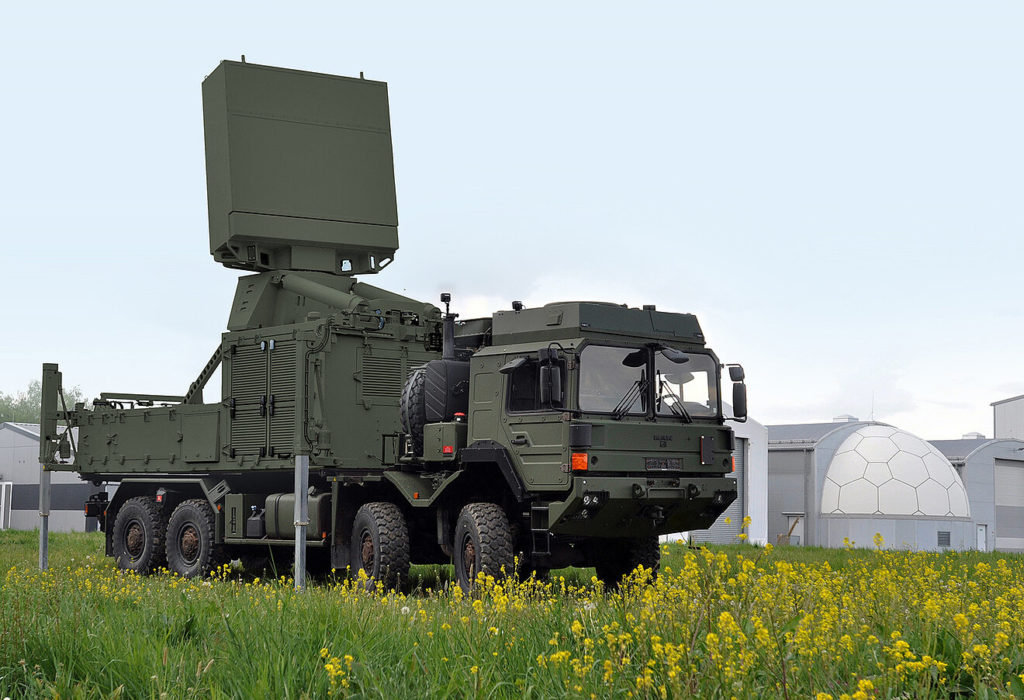
German defence contractor HENSOLDT has secured a contract worth over 340 million euros ($399 mn) to supply radar systems for Ukraine’s air defence capabilities, the company reported on 24 July.
The order includes TRML-4D high-performance radars and SPEXER 2000 3D MkIII short-range radars as part of the Near and Very Short Range Air Defence System commissioned by the German Armed Forces.
“Our high-performance radars are urgently needed by Ukrainian air defence,” HENSOLDT CEO Oliver Dörre said. “A number of radars have been protecting Ukraine since the start of Russia’s war of aggression. We are proud to be supplying further systems. The radars are extremely important for protecting citizens.”
Ukraine first received the TRML-4D radar in October 2022, with an initial delivery of four units integrated into their IRIS-T air defense systems. Additional deliveries followed, including another four TRML-4D radars in June 2023, and six more units are scheduled to be delivered by the end of 2024 as part of a major contract with HENSOLDT.
The TRML-4D radar operates on AESA (Active Electronically Scanned Array) technology and can detect and track approximately 1,500 targets within a 250-kilometre radius. The system identifies and classifies cruise missiles, drones, aircraft and helicopters.
SPEXER radars provide surveillance across various ranges for automatic detection and classification of ground, sea and low-flying air targets. The SPEXER 2000 forms part of Rheinmetall’s Skyranger 30 cannon-based air defence system and is deployed in German artillery installations and qualified air defence systems.
According to HENSOLDT, several of their radar systems have been operational in Ukraine since the beginning of the war. The company maintains decades of experience in air defence radar systems and continues developing technologies in this sector.
The radar delivery represents part of Germany’s broader military support package for Ukraine’s defence against Russian forces.
Read also
-
Ukraine to get 5 Patriots and 220,000 Gepard shells. Is that enough to stop Russian drone swarms?
-
From Finnish forests to Ukraine’s frontline: Volunteer Tapani joins International Legion to protect Europe’s future from war
-
Russia tests new UMPB-5 guided bomb on Kharkiv civilians day after Ukraine’s ceasefire proposal
US approves sale of two military aid packages to Ukraine worth $ 322 mn
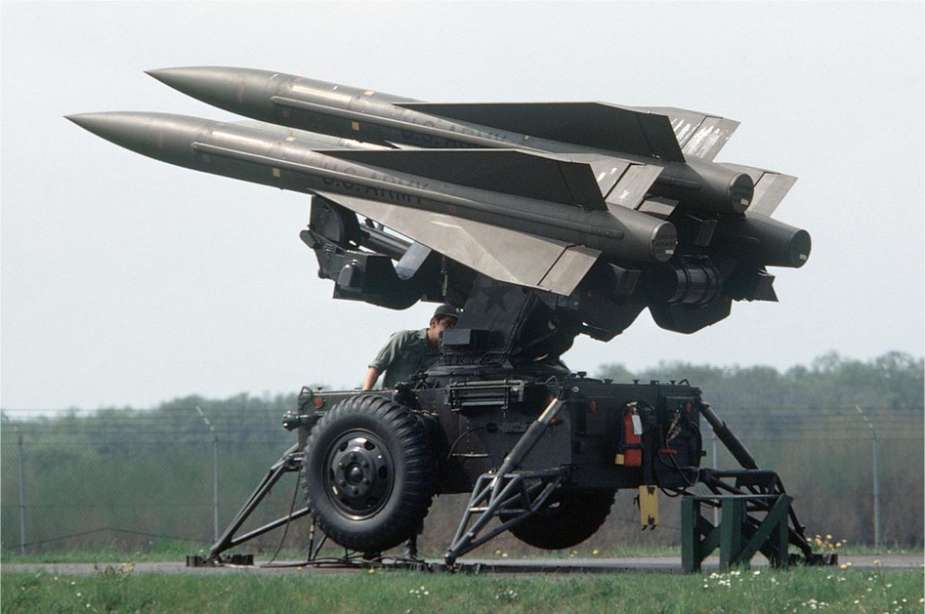
The US State Department has approved the sale of two military assistance packages to Ukraine totaling $322 million, the Pentagon announced on 23 July.
The approval covers $172 million in HAWK Phase III missile system support and $150 million for Bradley infantry fighting vehicle restoration services.
According to Pentagon press releases, the Ukrainian government requested the purchase of goods and services for maintaining HAWK missile systems. The $172 million package includes spare parts for HAWK systems, missile complex repairs, testing and auxiliary equipment, storage containers and related spare parts storage equipment, spare parts for MIM-23 HAWK missiles and missile repairs, plus additional logistics and program support elements.
The second package addresses Ukraine’s request for equipment and services to restore Bradley infantry fighting vehicles, along with technical assistance and training for Ukrainian military personnel. This component carries a $150 million price tag, Pentagon officials said.
US officials stated the packages will enhance Ukraine’s capacity to address current and future threats.
“Ukraine will not have difficulties implementing these goods and services into its armed forces,” the Pentagon press service reported.
The approval comes weeks after President Donald Trump confirmed on 14 July that the US will provide Ukraine with weapons worth “billions of dollars.” According to Trump, European NATO allies will purchase and distribute the equipment, including up to 17 Patriot air defense systems currently being prepared for shipment to Ukraine.
Read also:
- 21-year-old Ukrainian adopted by Italian family dies fighting Russia
- Zelenskyy’s anti-corruption crackdown killed EU’s secret plan to bypass Hungary for Ukraine accession—European Pravda
- EU Officials demand Ukraine explain controversial anti-corruption law weakening NABU, SAPO
You could close this page. Or you could join our community and help us produce more materials like this.
We keep our reporting open and accessible to everyone because we believe in the power of free information. This is why our small, cost-effective team depends on the support of readers like you to bring deliver timely news, quality analysis, and on-the-ground reports about Russia's war against Ukraine and Ukraine's struggle to build a democratic society.
Become a patron or see other ways to support.
It wasn’t just the Skripals—Russia’s covert attacks spanned years and continents, UK intelligence reveals
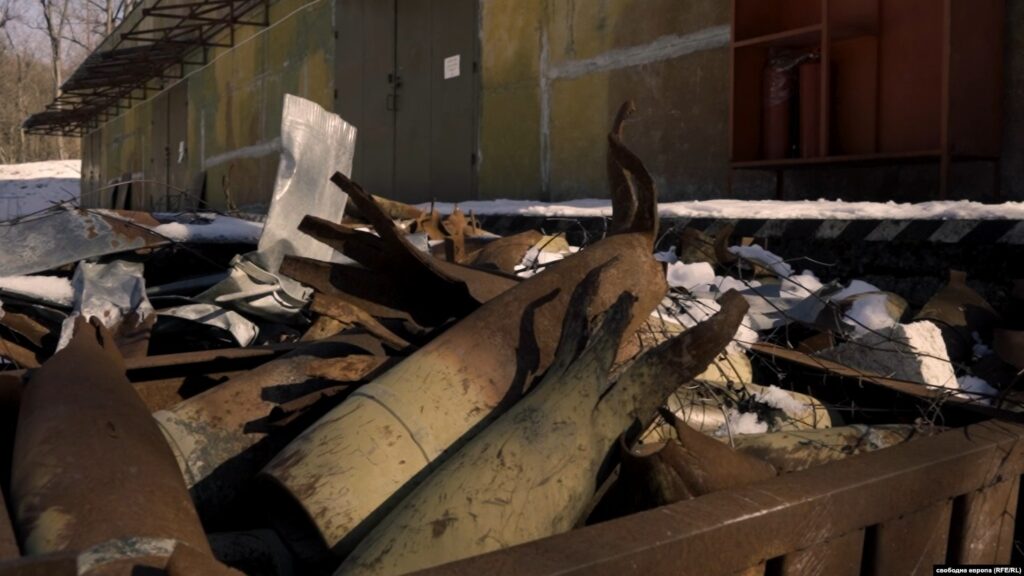
UK intelligence has exposed how Russian GRU sabotage units have carried out a global campaign of subversion, disinformation, and covert attacks. In its 23 July defense intelligence update, the British Defense Ministry has named the Russian units and outlined their years-long operations across Europe, Africa, and Ukraine.
On 18 July, the UK sanctioned three Russian GRU units and one interference agency, along with 18 military intelligence officers, for targeting the UK, its allies, and Ukraine.
British report reveals global GRU operations
According to the UK Defense Ministry’s Intelligence update published on 23 July 2025, Russia is “escalating its global campaign to subvert its adversaries and increase Russian influence.”
“Whilst Russian military intelligence (GRU) is at the forefront of these efforts, Russia has also turned to an increasing variety of non-state actors to conduct a full spectrum of overt to covert activities, including espionage, assassination, sabotage, and electronic, cyber and information operations,” the update reads.
The UK identified Unit 29155, also known as the 161st Specialist Training Center, as a key actor. Its cyber wing launched the WhisperGate attack—deploying destructive malware—in Ukraine in 2022. The wider unit was behind multiple sabotage and assassination operations, including the 2018 attempted murder of Yulia and Sergei Skripal in Salisbury, the 2011 ammunition warehouse bombing in Bulgaria, and a 2014 blast in Czechia.
Unit 26165, or the 85th Main Special Services Center, has run widespread espionage operations. It also provided targeting intelligence for Russian missile strikes, including the 2022 bombing of the Mariupol theater that killed hundreds of civilians, including children.
Unit 74455, part of the Main Center for Special Technologies, has carried out cyberattacks on democratic elections, national infrastructure, and financial control systems.
The fourth entity, the African Initiative, is a Kremlin-linked interference agency. UK intelligence says it conducts information operations in Africa, including the spread of conspiracy theories aimed at undermining global health efforts.
Read also
-
UK hits Russian intel unit involved in killings of 600 Ukrainian civilians in Mariupol, with historic sanctions
-
WSJ: Russia’s new intel dept orchestrates attacks across Europe
-
Russia paid Taliban to target US troops in Afghanistan in 2016-2019, investigation reveals
-
Ukraine links deadly 2015 depot blasts to GRU’s Skripal poisoning unit
Ukraine suffers first Mirage-2000 loss. Pilot ejects and survives
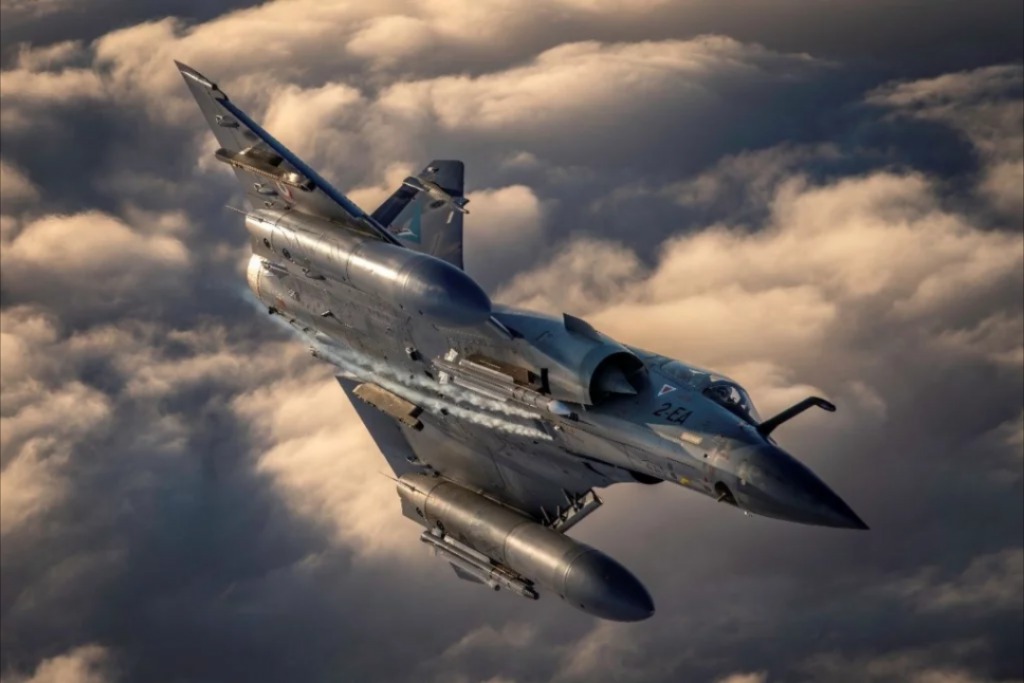
The Ukrainian Air Force’s Mirage-2000 crash occurred during an evening flight over Ukraine on 22 July, when a fighter jet suffered a sudden technical failure, forcing the pilot to eject. The incident marks the first confirmed loss of this aircraft type in Ukrainian service. The pilot survived, and no civilians were harmed on the ground, according to official statements.
Although the Air Force has not confirmed whether this specific Mirage-2000 was involved in air defense at the time, the crash comes amid Russia’s intensified drone and missile attacks on Ukrainian cities. In response, Ukraine continues to deploy its available resources, including combat aircraft, to counter incoming aerial threats where necessary.
Mirage fails in flight, pilot guides it away from civilians
The Ukrainian Air Force reported that the single-engine Mirage-2000-5 fighter jet experienced an in-flight malfunction during a scheduled mission. Colonel Yurii Ihnat, spokesperson for the Air Force Command, told Ukrainska Pravda that the pilot immediately alerted flight command, followed emergency protocols, and managed to steer the aircraft away from populated areas before ejecting. A rescue team quickly located the pilot, whose condition is reported as stable.
The crash occurred in open terrain. No casualties or damage were recorded on the ground. The Air Force noted that the pilot used all remaining onboard systems in an attempt to retain control before initiating the ejection sequence. Military officials stressed that such incidents, while rare, are not unprecedented in modern air forces.
A special commission has been appointed to investigate the Mirage-2000 crash and identify what triggered the failure.
Ukraine’s Mirage-2000 program under strain
As Militarnyi reports, this is the first Mirage-2000 Ukraine has lost since introducing the aircraft into combat roles. The jet had been fully modernized before its transfer from France. This includes upgrades for engaging ground targets.
The Mirage-2000 entered Ukrainian service earlier in 2025. In March, the Air Force reported that one of these fighters successfully intercepted a Russian Kh-101 cruise missile during a combined missile-and-drone attack. According to French Aid to Ukraine, the training program for Ukrainian Mirage pilots and technicians lasted six months and concluded at the end of December 2024.
Under French military assistance, Ukraine is expected to receive between 12 and 20 Mirage-2000 aircraft. Militarnyi notes that the final number may increase with possible additional deliveries from the French Air and Space Force or even Greece. The jets in Ukraine’s current fleet are capable of deploying high-precision weapons such as SCALP EG / Storm Shadow cruise missiles and AASM smart bombs.
Read also
-
France to train more Ukrainian pilots on Mirage fighter jets, capable of carrying missiles that destroy Russian command posts
-
Ukraine’s air defenses destroy 4,758 Russian aerial targets in June. Last night, Moscow struck Ukrainian farms and homes
-
Ukrainian airstrike levels Russian military facility in Kursk Oblast (video)
Kyiv court arrests suspected Russian spy embedded in anti-graft bureau

A suspected Russian spy in Ukraine’s national anti-graft bureau was arrested in Kyiv after security officials accused him of leaking restricted data to Russian intelligence via a traitor tied to fugitive ex-president Viktor Yanukovych. Liga reports that the Shevchenkivskyi District Court in Kyiv ordered the officer’s pretrial detention without bail until 20 September.
Anti-graft bureau officer suspected of spying for Russia
Liga, citing a law enforcement source, reports that the arrested individual is Viktor Husarov, an officer from the D-2 closed unit within the central office of the National Anti-Corruption Bureau of Ukraine (NABU). He was detained by the Security Service of Ukraine (SBU) on 21 July.
According to the Prosecutor General’s Office, the suspect allegedly carried out espionage on behalf of Russia’s Federal Security Service (FSB). Investigators claim he passed information about Ukrainian law enforcement officials and civilians to Russian intelligence through an intermediary. That intermediary, the office said, was Dmytro Ivantsov — a known traitor and former deputy head of personal security for Yanukovych, who assisted the former president’s escape to Russia in February 2014.
The Prosecutor General’s Office confirmed that at least 60 episodes of transmitting restricted information had been documented.
“For each such transmission, the NABU officer received funds to his bank card,” prosecutors added.
The officer has been officially charged with state treason and unauthorized actions involving restricted information committed by a person with authorized access.
SBU operation aimed to neutralize Russian penetration of NABU
On 21 July, the SBU and the Prosecutor General’s Office announced the launch of a special operation to disrupt Russian infiltration within NABU. The agencies stated they had detained a staff member of the central apparatus of NABU suspected of spying for Russia.
NABU said that it had earlier received a warning in August 2023 from SBU leadership about potential risks involving the suspect. The agency said it initiated an internal interview process to evaluate possible disciplinary action or dismissal. However, according to NABU, the SBU advised it not to proceed in order to avoid interfering with an ongoing counterintelligence operation targeting other individuals connected to the traitor.
Read also
-
Abuse of power: Ukraine’s Civil Anti-Corruption Council urges Zelenskyy to veto new law undermining anti-corruption system
-
Western trust under threat as Zelenskyy nears signing controversial law that crashes Ukraine’s anti-corruption system
-
Security service officials took $300,000 bribes as Ukraine guts corruption oversight
-
SBU: Russian “mole” in Ukraine’s Anti-Corruption Bureau spied for FSB under former President Yanukovych’s security chief
SBU: Russian “mole” in Ukraine’s Anti-Corruption Bureau spied for FSB under former President Yanukovych’s security chief
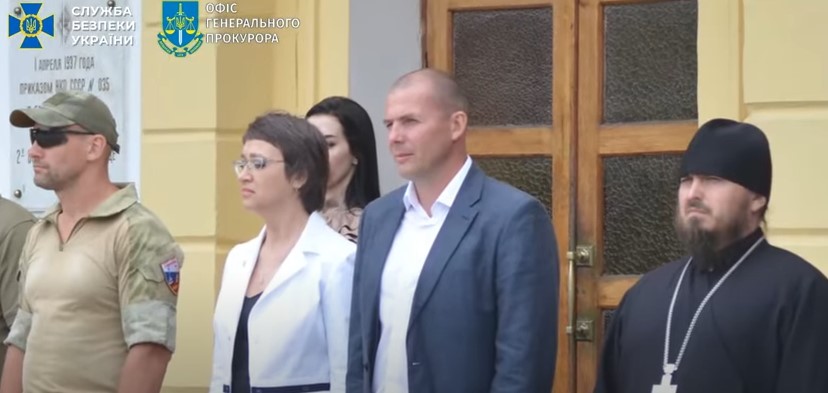
The Security Service of Ukraine (SBU) and the Office of the Prosecutor General have uncovered a Russian mole in the National Anti-Corruption Bureau of Ukraine (NABU). He worked in the elite, classified D-2 unit and was spying for the Russian intelligence service.
The Second Main Special Unit of Detectives, also known as D-2, holds a special status within NABU and reports directly to the bureau’s head. It investigates corruption-related crimes committed by high-ranking officials.
The investigation has established that the agent’s subversive activities were coordinated by traitor Dmytro Ivantsov, the former deputy head of security for ousted ex-president Viktor Yanukovych. In February 2014, Ivantsov helped Yanukovych flee to Russia after EuroMaidan protests, where over 100 activists were killed by pro-government snipers. He stayed in Crimea, where he was recruited by the FSB.
The SBU documented at least 60 instances of the suspect transmitting classified information to the former deputy head of Yanukovych’s security. According to the intelligence agency, he gathered foundational data on Ukrainian law enforcement officers and other citizens targeted by Russia for planned terrorist attacks and special information operations. Moscow planned to use this information for its attacks on them.
The agent obtained personal information about potential Russian targets from closed databases of Ukrainian law enforcement agencies. For each completed task, he received payments from his handler via bank card transfers.
“Earlier, SBU officers alerted NABU leadership about possible risks related to this employee. However, the agency’s management took no response measures, and the suspect continued working in his position while attempting to destroy evidence of his illegal activities,” the SBU statement says.
After documenting the crimes of the spy, the SBU and Prosecutor’s Office detained him, seizing his phone and computer equipment used to contact his handler. He faces imprisonment for up to 15 years.
EU imposes sanctions for first time on Chinese companies over aid to Russia in killing Ukrainians — Beijing protests

Beijing threatens to respond following sanctions for cooperation with Russia. The European Union has, for the first time, included Chinese banks and companies in a new sanctions package against Russia for the attack on Ukraine.
On 4 July, Chinese Foreign Minister Wang Yi told the EU’s foreign affairs chief Kaja Kallas that Beijing, Moscow’s top economic ally, cannot allow Russia to lose in its war against Ukraine. China fears that such an outcome would allow the US to fully pivot its attention to Beijing, he said.
Beijing’s reaction was immediate and harsh: “China expresses strong dissatisfaction and resolute protest.”
According to a statement from the Ministry of Commerce of the People’s Republic of China, the Chinese side views the 18th sanctions package as an unfriendly act that violates international law, undermines economic relations with the EU, and threatens financial cooperation.
Four Chinese companies were added to the EU blacklist, including two from Hong Kong, Zhu Jiang Shipmanagement and ACE Electronic HK, as well as Wuhan Global Sensor Technology and Shandong ODES Industry from mainland China. The reason: assistance to Russia in circumventing restrictions, supplying technologies and components that can be used in the production of weapons that kill Ukrainians.
“China calls on the EU to immediately stop its wrongful practice of including Chinese enterprises and financial institutions on sanction lists and will take necessary measures to reliably protect the lawful rights and interests of Chinese companies,” the statement said.
China’s outrage coincides with preparations for the 25th anniversary China–EU summit, scheduled for 24 July in Beijing. This is the second consecutive time the summit will not be held in Europe as Xi Jinping refused to travel to Brussels, and instead, European leaders will come to China to discuss the most sensitive issues in bilateral relations.
Despite the pressure, Brussels sends a clear signal: sanctions evasion via third countries, including China, will no longer go unanswered.
Previously, US Army Europe and NATO Allied Forces Supreme Commander General Alexus Grynkewich has warned that American and its European allies likely have only a year and a half to prepare for a potential global military conflict with China and Russia. According to Bild, the two dictatorships may launch a coordinated strike in 2027.
Read also
The K-Pop Band Big Ocean Is Making Waves With Sign Language

© Tiffany Boubkeur/Getty Images
Italy faces backlash for hosting Russian conductor, who backs killings Putin’s regime, at UNESCO World Heritage palace
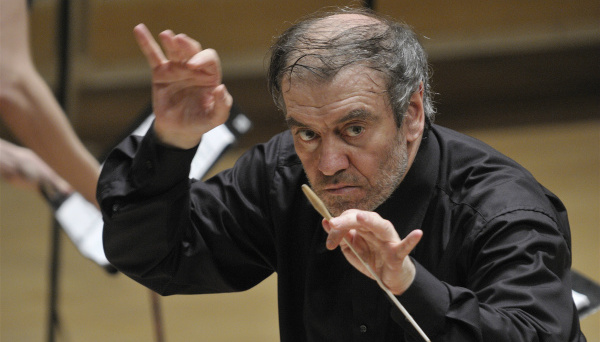
The Ukrainian community in Italy has called to cancel the concert of Russian conductor Valery Gergiev, scheduled for 27 July at the Royal Palace of Caserta, a UNESCO World Heritage site. Gergiev publicly supports the Russian regime and its military aggression against Ukraine.
The community has sent a letter to UNESCO Director-General Audrey Azoulay, Dr. Antonio Patuelli, Chair of the Italian National Commission for UNESCO, and the Italian Minister of Culture, Alessandro Giuli.
The activists emphasize that Gergiev’s support “goes beyond the realm of art” and includes public acts that legitimize a regime responsible for war crimes, the deportation of children, attacks on civilian infrastructure, and on Ukraine’s cultural heritage, which is also under UNESCO protection.
Ukraine’s Defense Intelligence: Russia loots ancient treasures from Crimea’s UNESCO heritage site
“Ukrainians view UNESCO as the last line of defense for fundamental values: memory, truth, and respect, all of which the Russian government blatantly disregards,” the letter continues.
The Ukrainian community continues, “How can an institution that safeguards the dignity and memory of nations allow one of its protected sites to host an artist who has become a global symbol of military propaganda?”
“How can it ignore how deeply offensive this decision is to the victims of the conflict, to the Ukrainian people, and to all those fighting for peace and justice worldwide?” the activists say.
The letter also argues that holding Gergiev’s concert at a historical site like the Palace of Caserta contradicts UNESCO’s principles of protecting peace, cultural heritage, and solidarity among peoples.
Ukrainian supporters to rally in Bologna after Russian propaganda found in Italian textbooks
Ukraine remembers linguist Iryna Farion, target of Kremlin’s propaganda, assassinated in Lviv in apparent campaign against Ukrainian voices
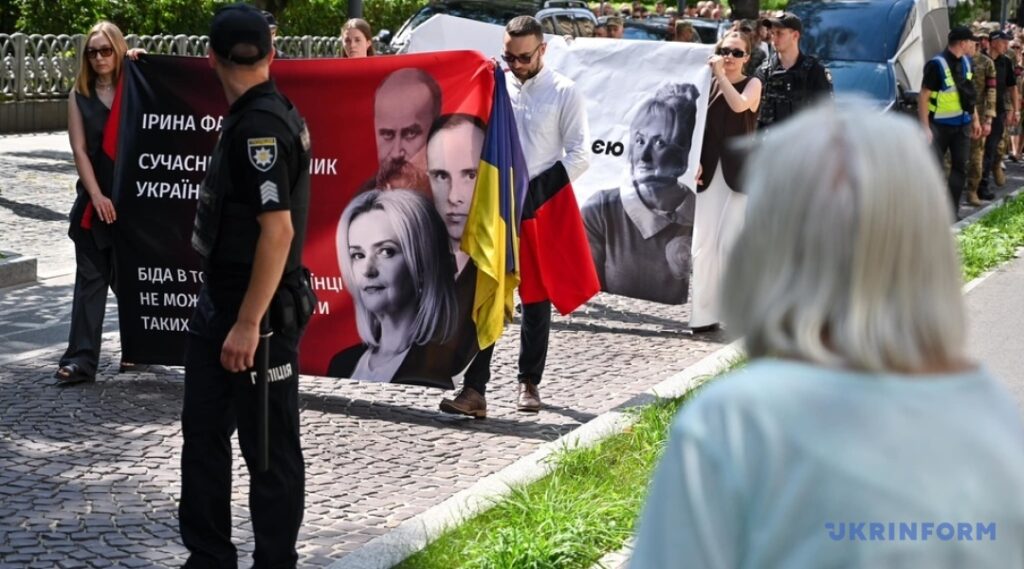
She was killed to be silenced. On July 19, in Lviv, Ukrainians marked the first anniversary of the death of Iryna Farion. She was a prominent linguist, scholar, politician, and symbol of the fight for Ukrainian identity, UkrInform reports.
Farion served as a Member of Parliament from 2012 to 2014, lectured at the university, and spent decades leading the movement to revive the Ukrainian language after centuries of Russification. Her political stance was openly anti-Russian, making her a frequent target of Kremlin propaganda and hate.
Her murder in Lviv in 2023 at the age of 60 is seen not merely as a criminal act but as part of Russia’s hybrid war.
“The enemy is trying to use every tool to divide our nation,” said Ukraine’s military intelligence chief, Kyrylo Budanov, following her death.
The attack on Farion is also regarded as a psychological attempt to intimidate its most courageous Ukrainian voices.
A year after the assassination, her family, colleagues, students, and community members gathered for a memorial service at the Saints Peter and Paul Garrison Church. Later, a procession made its way to Lychakiv Cemetery, where Farion is buried.
People will also assemble in silence in the courtyard on Masaryk Street, where she was killed, at 7:22 PM, the exact moment the fatal shot was fired one year ago.
Farion’s daughter, Sofiia Osoba, left a powerful message on Instagram.
“A year. What is it like to live without Mom?.. I am an orphan. Ukraine is orphaned… I don’t want 19 July… This is the end of everything. 23:20. The end of your life. Now, it will be years,” she wrote.
Six days after the murder, Ukrainian law enforcement detained the suspect, 19-year-old Dnipro resident Vyacheslav Zinchenko. The court trial is currently ongoing.
Read also
-
Son-in-law of slain Ukrainian language advocate and Russian critic Iryna Farion killed in combat
-
Court orders custody for alleged killer of ex-MP and linguist Iryna Farion
-
Ukrainian authorities say suspect accused of killing Russian critic Farion prepared for assassination for two months
-
Assassinated Ukrainian language warrior Farion mourned by thousands in Lviv
British intelligence: Russia moves to erase Ukrainian language in occupied schools
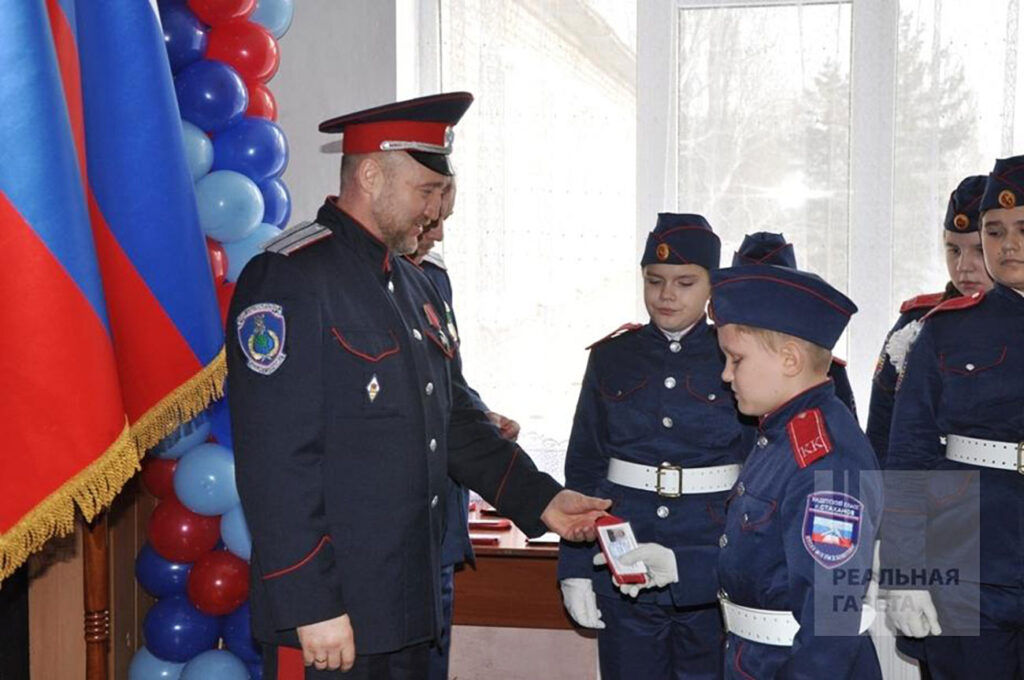
Russia moves to erase Ukrainian language from schools in occupied Ukrainian territories, the UK Ministry of Defense reported in its 18 July 2025 intelligence update. A draft order from Russia’s Education Ministry outlines plans to eliminate Ukrainian from school curricula starting September 2025. The Ministry justifies the move by citing an allegedly “changed geopolitical situation.”
Kremlin prepares to ban Ukrainian in Zaporizhzhia and Kherson schools
The draft order will primarily affect children in Russian-occupied areas of Zaporizhzhia and Kherson oblasts, where Ukrainian has remained a mandatory subject despite the occupation. Under the new plan, schools will no longer be allowed to teach Ukrainian as part of the core curriculum. The order also reportedly reduces the study of Ukrainian literature to a minimal level, further cutting off cultural education.
Long-term effort to eliminate Ukrainian identity
The UK Ministry of Defense reported:
“This follows reported long-term Russian efforts to reduce and eliminate the Ukrainian language in schools in other illegally occupied Ukrainian territories, including Crimea, whilst Russia’s President Putin has simultaneously repeatedly demanded protections for the Russian language within unoccupied territories of Ukraine.”
Cultural cleansing through education policy
The UK Ministry of Defense reports that the Russian Education Ministry’s plans mark “a further addition” to the Kremlin’s “long-standing Russification policy” in occupied Ukrainian territory — a campaign that seeks to “extirpate Ukrainian culture, identity, and statehood.”
Read also
-
Russia declares Yale University “undesirable” after it tracked 30,000 stolen Ukrainian children
-
Explosion rocks central Luhansk as top collaborator Manolis Pilavov killed (updated)
-
Russia planned Russification of Ukrainian children after swift victory—now, it uses them to pressure Kyiv into concessions
-
After killing tens of thousands and erasing Mariupol, Russia now seeks to resurrect statue of its butcher in city’s center
London also slashes price cap on Russian oil to $47.60 per barrel after EU’s sanctions adoption

London and Brussels jointly cut the Kremlin’s oil revenues. The UK government decided to lower the price cap on Russian oil from $60 to $47.60 per barrel after the EU adopted the 18th EU sanctions package on 18 July.
The new Russia sanctions package will include a formal ban on the Nord Stream 1 and 2 pipelines. It will also target 105 ships from Russia’s shadow fleet and the entities enabling their operations. In addition, 22 Russian banks will face new financial restrictions aimed at cutting their access to international funding. Brussels will also ban the export of European technologies used in Russian drone production.
According to Western analysts, Moscow’s oil profits have already dropped by 35% compared to last year. The new lower price cap will further restrict the Kremlin’s financial resources used to fund its aggression against Ukraine.
“The UK and its EU allies are turning the screw on the Kremlin’s war chest by stemming the most valuable funding stream of its illegal war in Ukraine even further,” said UK Chancellor of the Exchequer Rachel Reeves.
The official added that this decisive step to lower the crude oil price cap will target Russia’s oil revenues and intensify pressure on Russian President Vladimir Putin by exploiting his greatest vulnerability.
London emphasized that the sanctions are intended to punish the aggressor and preserve the stability of the global energy market.
Read also
-
EU agrees on new Russia sanctions package targeting energy and finance
-
Kremlin’s mouthpiece calls Europeans “imbeciles,” says strikes on Kyiv will intesify after EU imposed new sanctions against Putin’s war machine
-
Kremlin’s mouthpiece calls Europeans “imbeciles,” says strikes on Kyiv will intesify after EU imposed new sanctions against Putin’s war machine
Kremlin’s mouthpiece calls Europeans “imbeciles,” says strikes on Kyiv will intesify after EU imposed new sanctions against Putin’s war machine

The Kremlin has once again erupted in threats and vitriol. Following the adoption of the EU’s 18th sanctions package against Moscow’s aggression, Dmitry Medvedev, the Russian former president, lashed out, calling European Commission President Ursula von der Leyen a “disgusting old hag” and branding Europeans as “imbeciles.”
Medvedev is often called the Kremlin’s “mouthpiece” for his apocalyptic social media statements reflecting Moscow’s official position. The former Russian president has frequently issued nuclear threats aimed at the West.
“European imbeciles have approved the 18th package of sanctions against our country. There’s no point in writing that it will change Russia’s stance any more than the previous seventeen did,” Medvedev said on social media.
EU agrees on new Russia sanctions package targeting energy and finance
He believes the Russian economy would endure and stated that the destruction of Ukraine would continue.
“Strikes on targets in the so-called Ukraine, including Kyiv, will be carried out with increasing force,” he stressed.
Medvedev then escalated his tirade, launching insults at EU nations including Poland, Germany, France, the Baltic states, and the UK. He urged maximum detachment from the EU, which he claimed is now home to “Brits mired in their own shit.”
He went further, stating that Russians should learn to hate Europeans, just as their ancestors once did.
“Hatred is the most powerful weapon, allowing us to move most effectively toward its opposite—love. Naturally, toward those who deserve it,” he claimed.
Von der Leyen received particular scorn, with Medvedev attempting to mock her medical background.
“I’m not sure she even knows where the heart is. Though it seems she’s always thought with the part of her body she used during her failed medical career,” he said.
Medvedev’s outburst once again illustrates the tone of official Russian rhetoric amid intensified missile strikes on Ukrainian civilians, Russia’s answer to US President Donald Trump’s recent peace efforts.
France to train more Ukrainian pilots on Mirage fighter jets, capable of carrying missiles that destroy Russian command posts
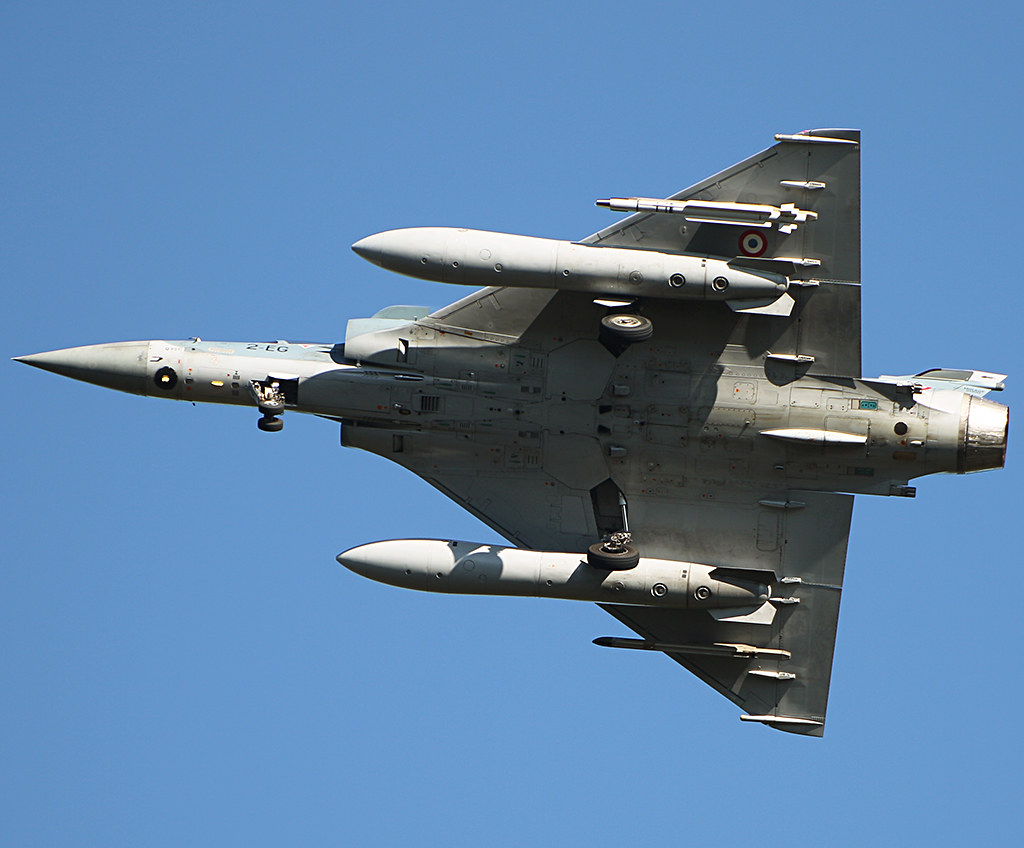
Ukrainian pilots to gain greater chances in the sky due to Paris’s support. After an hour-long meeting with French President Emmanuel Macron on 18 July, Ukrainian leader Volodymyr Zelenskyy confirmed that France is ready to continue training Mirage fighter jet pilots on its own territory.
In February 2025, Ukraine received the first batch of Dassault Mirage 2000-5 fighter jets, modified to carry the powerful SCALP-EG cruise missiles and Hammer glide bombs. The SCALP-EGs are crucial to Ukraine’s strategy. With a range of up to 155 miles and bunker-busting warheads, these 2,900-pound missiles are designed to target Russian command posts, disrupting military coordination and weakening their resistance.
“I want to specifically highlight our agreement on Mirage pilot training: France is ready to accept additional pilots for training on additional aircraft,” said Zelenskyy.
Among other key issues was the strengthening of Ukraine’s air defense system. The two leaders discussed the supply of missiles for modern SAMP/T systems and the launch of a joint project to fund interceptor drones. Zelenskyy noted that relevant decisions will be prepared at the level of both countries’ defense ministries.
The Ukrainian president also thanked France for its active role in promoting the EU’s 18th package of sanctions and confirmed that Kyiv and Washington are working together so that “Russia feels truly global pressure.”
The EU agreed on a new package after the bloc’s ambassadors reached consensus on restrictions targeting key sectors of the Russian economy. Malta and Slovakia reportedly lifted their vetoes after receiving critical assurances.
The new Russia sanctions package will include a formal ban on the Nord Stream 1 and 2 pipelines. EU High Representative for Foreign Affairs and Security Policy Kaja Kallas said the bloc would also reduce the oil price cap as part of efforts to cut the Kremlin’s war revenues.
ISW: Russia is “burning the candle at both ends”—bankers quietly brace for bailouts
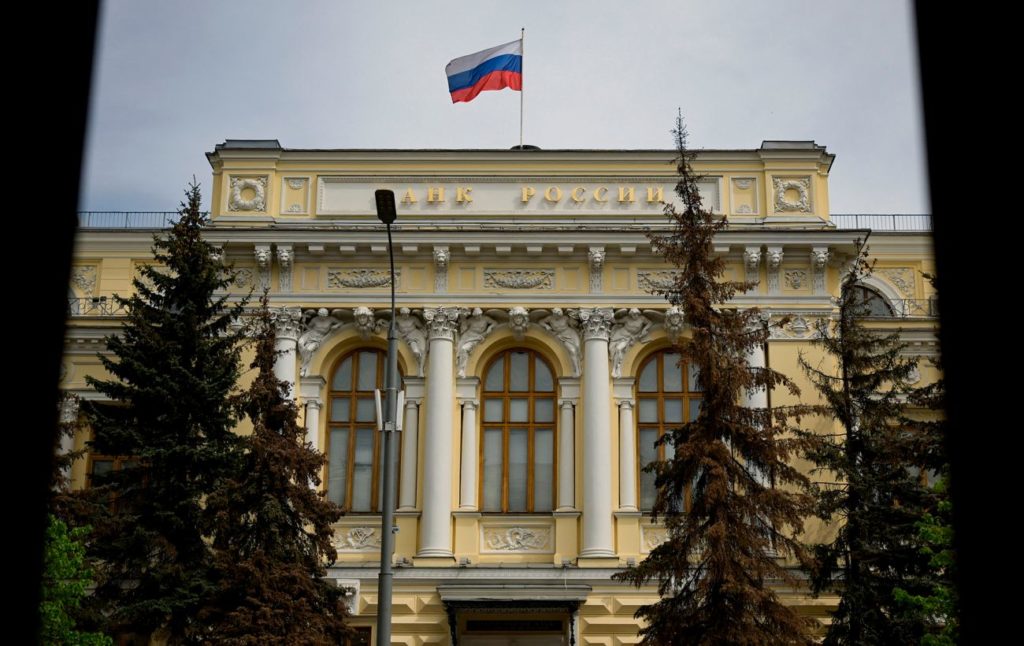
Russia is “burning the candle at both ends” economically as top bankers quietly brace for bailouts amid a growing Russian debt crisis, the Institute for the Study of War (ISW) wrote on 17 July. While the Kremlin pretends its economy is stable amid the ongoing protracted invasion of Ukraine, structural fractures continue to widen beneath that illusion.
Russian bankers brace for fallout as loans go unpaid
Bloomberg reported on 17 July that senior executives at several of Russia’s largest banks have quietly discussed the possibility of requesting government bailouts. This comes as non-performing loans — debts that are late or unpaid — continue to rise in 2025. Documents reviewed by Bloomberg show that three systemically important Russian banks may need to recover funds lost to bad credit.
Russian banks have already seen non-performing loans grow by 1.2% this year. Forecasts suggest the rate could increase from the current 4% to as high as 6–7% by 2026. While ISW cannot independently verify these figures, it notes mounting signs of concern within the financial sector.
Central Bank Chairperson Elvira Nabiullina has dismissed fears of a banking crisis, claiming that reserves totaling eight trillion rubles (around $102.5 billion) are sufficient to cushion any shocks. However, ISW assesses that the Central Bank is likely unwilling to bail out major banks outright — a decision that could spark liquidity problems or even bank failures, directly undermining Russian President Vladimir Putin’s narrative of economic resilience.
War-driven spending pressures the economy
ISW argues that the Kremlin is worsening the growing Russian debt crisis by expanding military spending while relaxing monetary policy to support short-term growth. Since 2022, the government has boosted one-time payments and salaries to attract military recruits and reinforce its defense industrial base. These high payments are necessary due to sustained battlefield losses and the challenge of attracting volunteers.
As defense wages rise, civilian industries struggle to retain workers, pushing up prices across service sectors. Labor shortages now impact both economic growth and war production. ISW maintains that Russia cannot indefinitely sustain these payouts or replace troops lost at current rates without a general mobilization — a step Putin has avoided.
Inflation appears tamed — but only on paper
On the surface, the Russian Central Bank reports success in reducing inflation. Bloomberg noted that in June 2025, the seasonally adjusted annual rate (SAAR) of inflation fell to 4%, matching the Bank’s target. The drop is attributed in part to a temporarily strong ruble, which lowered the cost of imported goods and helped suppress input costs and inflationary pressures for companies.
However, the Central Bank acknowledged that official annual inflation still stands at 9%. The SAAR is a short-term measure and does not reflect deeper economic trends. ISW argues that this data masks the real problems. Two complicating factors — the fading effect of ruble strength and rising service costs — are expected to slow progress in bringing inflation under control.
Contradictions threaten long-term stability
The think tank concludes wrote:
“Russia is effectively burning the candle at both ends by simultaneously loosening monetary policy to stimulate short-term growth, while expanding fiscal expenditure to feed the military effort.”
This path is likely to deepen the country’s macroeconomic instability, erode the value of the ruble, and diminish consumers’ ability to cope with rising costs. Behind the Central Bank’s controlled narrative, ISW sees rising stress in Russia’s economic foundation — a crisis building quietly but steadily.
‘Bonjour’ Sets Off a Linguistic Dispute on a Belgian Train

© Hatim Kaghat/Belga Mag, via Agence France-Presse — Getty Images
EU will try again to choke off Putin’s war machine with 18th sanction package this week, after Slovakia blew whole plan apart
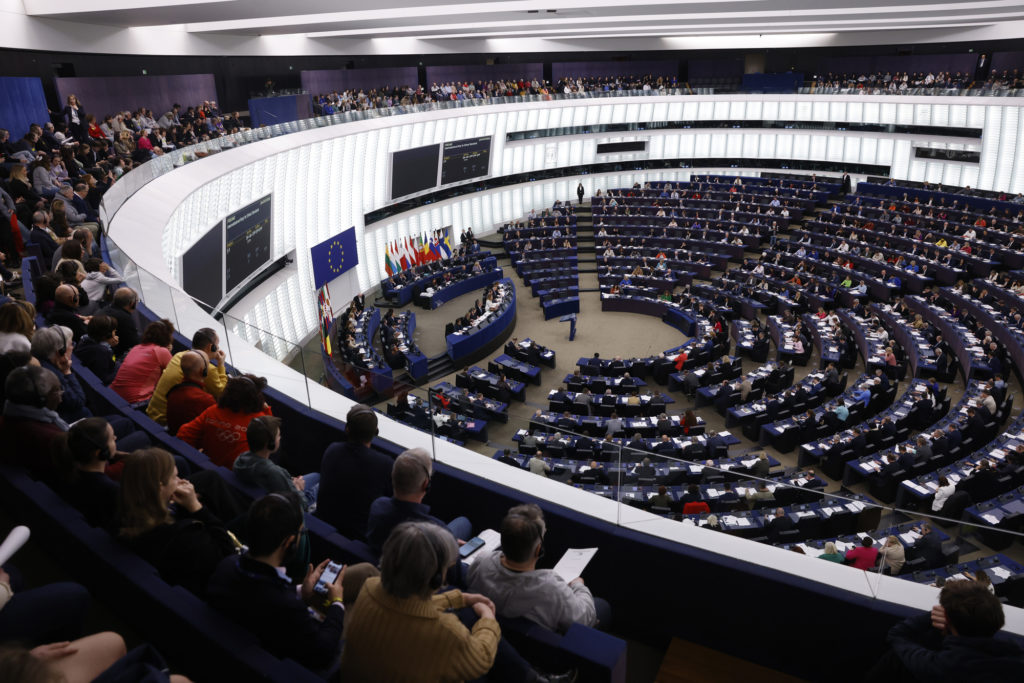
The EU may revisit the vote on its 18th sanctions package against Russia as early as 18 July after the bloc’s representatives failed to reach a consensus on Wednesday, 16 July. The deadlock stems from Slovakia’s opposition, which is tied to the European Commission’s gas policy.
According to The Guardian, Slovakia is demanding guarantees on Russian gas supplies and wants changes to the European Commission’s plan to phase out all Russian gas imports by 2028. Slovak Prime Minister Robert Fico has said he aims to reach a compromise with the EU by 15 July.
“No green light today on Russian sanctions during debate with
ambassadors. They may return to the issue on Friday,” reports Rikard Jozwiak from Radio Free Europe/Radio Liberty.
The proposed sanctions package reportedly includes:
A “dynamic mechanism” for pricing Russian oil, 15% below the market price, which is approximately $47 per barrel
- A ban on operations involving the Nord Stream gas pipelines,
- Sanctions against a Russian oil refinery operating in India,
- Restrictions on two Chinese banks assisting Moscow in evading sanctions,
- Measures targeting Russia’s “shadow fleet” transporting energy resources outside sanctions regimes.
Meanwhile, Estonia has warned it will block the package if the provision to lower the oil price cap is removed, ERR writes.
“We have a very clear position that the oil price cap reduction must be included in this package. We hold a very firm stance on this issue,” Estonian Foreign Minister Margus Tsahkna says.
At the same time, Lithuanian Foreign Minister Kęstutis Budrys has expressed hope that pressure on Russia will only intensify, according to Delfi. He has also announced that the country will begin its work on the next 19th sanction package after the 18th is adopted.
“The next package should follow, and we will continue this process until the Russian war machine either chokes or shuts down due to lack of revenue,” he has noted.
Unanimity remains the EU’s only path to advancing sanctions policy, and Russia has proven adept at exploiting this vulnerability.
One Telegram message promised romantic date for Ukrainian soldier — next almost killed him
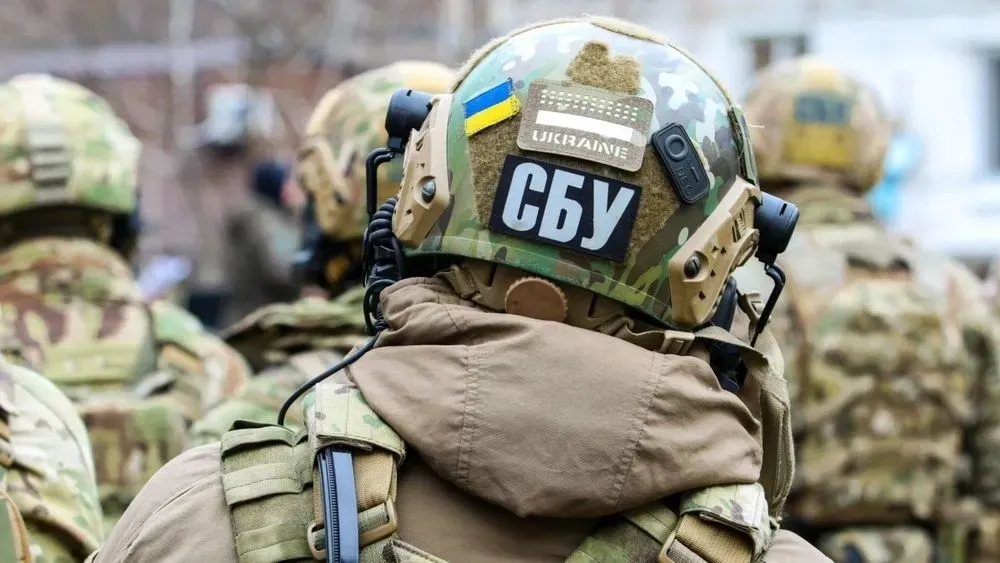
A Ukrainian soldier could have gone on a date after meeting someone on Telegram. But before the meeting, he was asked to do a “small favor,” which could have turned deadly if not for law enforcement.
Russia has expanded its hybrid operations amid the war. It is creating new units for information and psychological sabotage, spreading fake news and intimidation, carrying out cyberattacks and sabotage with booby-trapped gifts, and orchestrating assassination attempts against military personnel and leaders via social networks.
The Security Service of Ukraine (SBU), together with the National Police, thwarted a terrorist attack planned by an FSB agent network. One of the plots involved a fake “romantic date” in Dnipro.
A pair of Russian agents gained the trust of the Ukrainian soldier. Through Telegram, they suggested he meet with the “sister of a fellow soldier.” Before the date, the girl asked him to pick up her brother’s belongings from her friend.
“In reality, it was an accomplice who handed the soldier a bag containing explosives,” the SBU reported.
Afterward, Russian agents tried to detonate the device remotely, but it was defused in time.
It was just one of at least five terrorist attacks planned by them inside Ukraine.
- In Kyiv, two drug addicts tried to plant explosives near a military facility. They were coordinated from a detention center by an inmate who recruited his cellmate and two more accomplices.
- In Vinnytsia, a 19-year-old individual from Zhytomyr Oblast was detained while planting explosives near an apartment building housing military families.
- In Rivne, a terrorist hid explosives inside a soldier’s service vehicle and installed a surveillance camera.
Russian intelligence recruited all perpetrators via Telegram channels advertising “easy money.” According to the SBU, each attack attempt came with promises of financial reward.
All suspects have been charged with state treason, sabotage, and terrorism. They face life imprisonment and confiscation of property.
Europe seeks genuine US burden-sharing of arming Ukraine amid Trump’s weapons promise
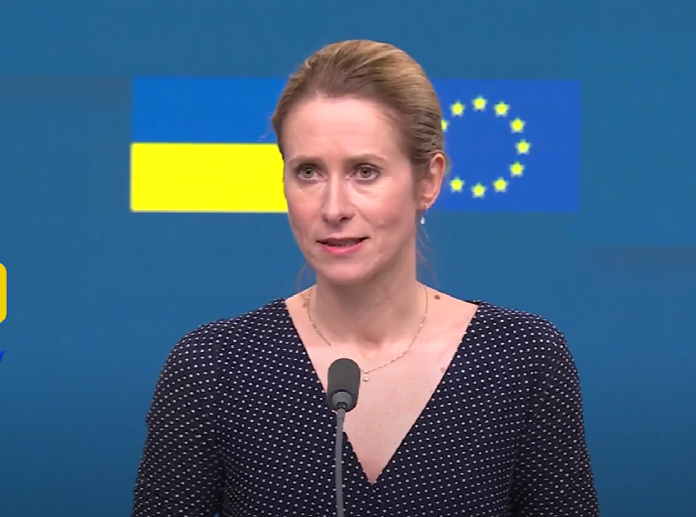
European Union foreign policy chief Kaja Kallas said that Washington should “share the burden” of arms deliveries to Ukraine rather than expecting European allies to fund American weapons purchases.
“We welcome President Trump’s announcement to send more weapons to Ukraine, although we would like to see US to share the burden. America and Europe are working together,” Kallas said after a Brussels meeting of EU foreign ministers on 15 July.
NATO maintains that Europe now contributes the majority of weapons flowing to Ukraine, countering Trump’s characterization of burden distribution.
According to Kallas, “If you promise to provide weapons but say someone else will pay for them, then you’re not actually providing them.”
Trump also offered to supply Ukraine with long-range Tomahawk missiles as part of a broader $10 billion NATO-backed military aid package.
However, Ukrainian military intelligence noted that Ukraine lacks the necessary launch platforms such as strategic bombers or combat ships to effectively deploy these missiles.
Previously, Trump had emphasized supplying only defensive weapons and was cautious about escalating the conflict with Russia. However, growing frustration with Russian President Putin’s rejection of peace efforts and intensifying Russian attacks on civilians appears to have changed his stance.
Read also
-
Ukraine jokes about giving US envoy “Ukrainian passport” as Russia stops bombing Kyiv when Americans visit
-
Trump and NATO unleash billions in weapons for Ukraine as Putin faces 50-day ultimatum
-
The Telegraph: Europe plans to use frozen Russian assets to pay for Donald Trump’s $10 billion weapons package for Ukraine
A 900-Year-Old Typo May Unravel a Chaucer Mystery
Russia’s foreign hit squad eliminated in Kyiv shootout after assassination of SBU colonel
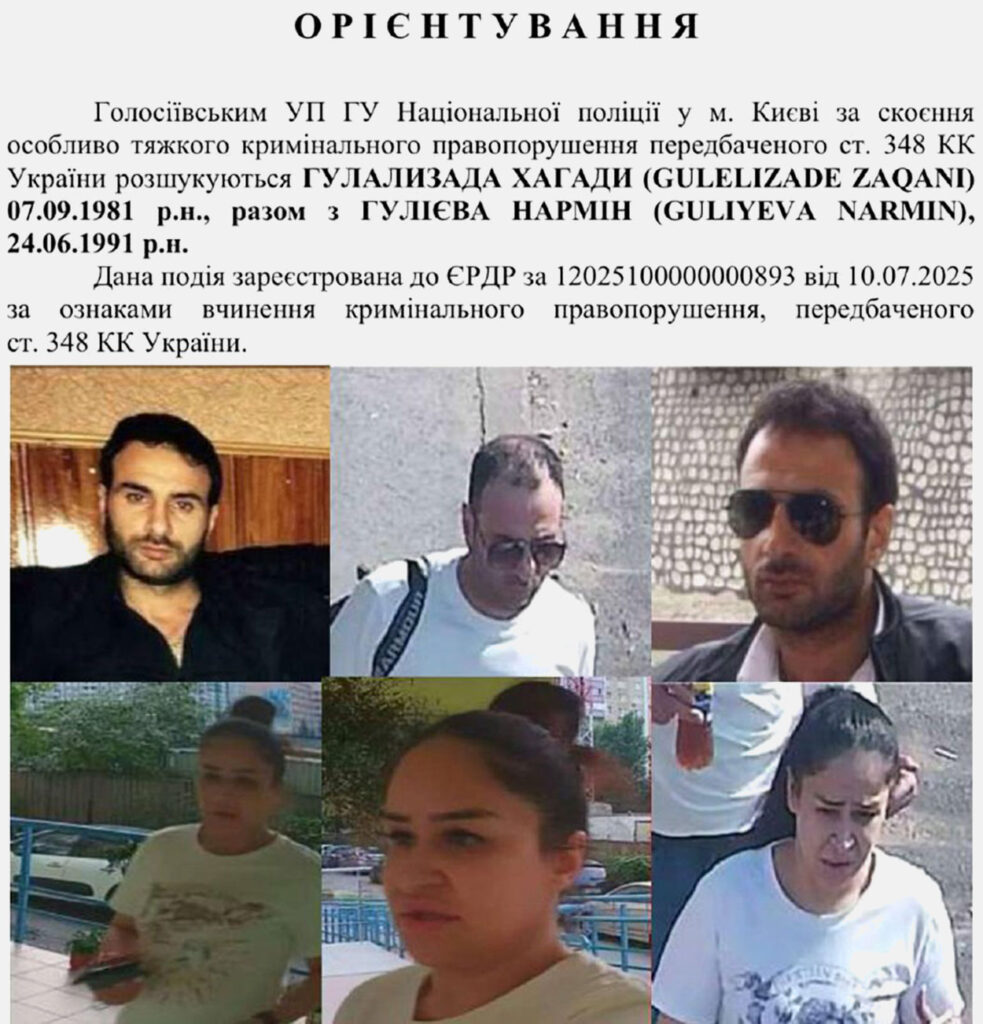
SBU Colonel Ivan Voronych’s killers — a foreign man and woman working for Russia’s FSB security service — resisted arrest and died in a firefight with law enforcers during a special operation led by the Security Service of Ukraine.
Foreign assassins tracked after bold murder of SBU officer
On 13 July, the Security Service of Ukraine (SBU) and National Police reported the elimination of a foreign hit squad in Kyiv Oblast. This occured days after they murdered SBU Colonel Ivan Voronych in the capital on 10 July. The SBU reports that the man and woman — both foreign nationals — had been sent to Ukraine by Russia’s FSB with clear instructions to assassinate the SBU officer.
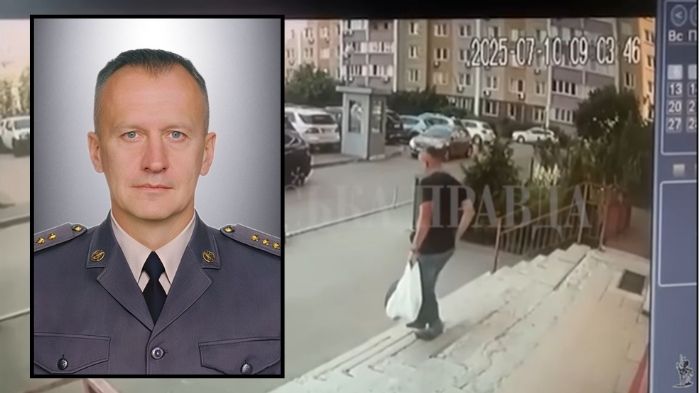
The brain behind Ukraine’s shadow war successes—Motorola and Kursk—gunned down in Kyiv parking lot
According to the investigation, the FSB handler instructed the duo to surveil Voronych, identify his daily routine and routes, and later provided them with coordinates of a stash containing a pistol with a suppressor. In Kyiv’s Holosiivskyi District, one of the assailants approached Voronych on the morning of 10 July near his residence and fired several point-blank shots. The officer died on the spot. The foreign hit squad in Kyiv had tried to go into hiding following the assassination.
The case was registered under Article 348 of the Criminal Code of Ukraine — attempted murder of a law enforcement officer, military serviceman, or public order official.
Special operation ends with foreign suspects killed
The head of the SBU, Lieutenant General Vasyl Maliuk, personally oversaw the special operation to identify and locate the foreign hit squad in Kyiv, the agency said. The operation involved covert investigative and counterintelligence measures. Ukrainian forces discovered the suspects’ hideout and moved in early morning on 13 July.
“When they were being detained, they resisted. There was an exchange of fire, and the scum were eliminated,” said Maliuk. He added, “Let me remind you: the only future for the enemy on Ukrainian territory is death.”
Maliuk thanked National Police officers for their professional cooperation and emphasized that countering Russian intelligence operations remains a core priority for the SBU. He stated that the service successfully prevents 85% of crimes the enemy attempts to commit in Ukraine.
SBU colonel targeted for role in cross-border operations
The New York Times has previously reported that Colonel Ivan Voronych played a role in Ukrainian military operations in Russia’s Kursk Oblast. He served in the SBU since 1997 and was part of the elite Alpha Special Operations Center.
Ukrainian intelligence officer and former SBU operative Roman Chervinskyi described Voronych as one of the initiators of the SBU’s field of activity that has “caused many problems for the Russians.”
Modi Wants More Indians to Speak Hindi. Some States Are Shouting ‘No.’

© Indranil Mukherjee/Agence France-Presse — Getty Images
EU pours billions into drone firms that steal from Ukraine’s Skyeton, company with 350,000 combat flight hours

Skyeton, the Ukrainian developer of the well-known long-range Raybird unmanned aerial vehicles, which have logged over 350,000 hours of combat flights, has become a target of technological espionage by unscrupulous European companies, The Telegraph reports.
The Raybird vehicles are capable of carrying different types of payloads, such as reconnaissance cameras, radio frequency locators, and other equipment, and flying up to 2,500km on missions up to 28 hours long.
Roman Kniazhenko, the company’s CEO, reveals this. According to him, Western manufacturers visit “as guests” with alleged proposals for cooperation, but instead they are trying to steal production secrets.
“Then they do beautiful pitch books, beautiful presentations about how they’re operating in Ukraine. But actually they’ve done just a couple of flights in Lviv [the western city more than 1,000km from the front line],” he says.
Sometimes, Kniazhenko continues, he sees in their presentations, “literally my own words, without any change.”
He also emphasizes that while Ukrainian drones withstand real combat conditions, taking off even from puddles, European governments are spending billions on products that merely simulate combat effectiveness.
“The big problem, after that, is that billions of dollars go to the companies that still don’t have any idea what they’re doing,” says Kniazhenko.
Meanwhile, the Skyeton team, currently 500 people strong, works 24/7 developing drones for the toughest frontline conditions.
One example of its effectiveness was an operation in the Black Sea: Ukrainian special forces went missing at night, and a Raybird, with its lights on, was able to locate them in the dark waters.
“From one side, everything looks perfect for us. But it was like hell, a night of hell. When you are destroying something you feel good for a couple seconds. But when you know that you saved someone. Like, it’s a totally different feeling,” explains Kniazhenko.
He also urges the West to fund the production of Ukrainian drones on its territory instead of starting a startup from scratch. Every country has the technologies it is good at, he stresses, adding that for Ukraine, it is clear that it is drones.
Ukraine’s Intelligence: Massive gas pipeline explosion hits Russian military supply network, thousands kilometers from Kyiv

While Moscow is busy relentlessly attacking Ukraine, gas pipelines are blowing up inside Russia itself. According to Ukrainian Defense Intelligence sources, a powerful explosion occurred in the city of Langepas, located in the Khanty-Mansi Autonomous District, damaging a major section of a large trunk gas pipeline, UNIAN reports.
This pipeline supplied gas to Russia’s defense industry facilities in the Chelyabinsk, Orenburg, and Sverdlovsk oblasts. The destroyed section had an annual throughput capacity of 2.6 billion cubic meters.
“With the price of 1,000 cubic meters of gas at around $350, the immediate damage alone amounts to at least $1.3 million,” the source emphasizes.
At the time of the explosion, about 4.1 million cubic meters of gas were flowing through the pipeline. Due to the difficult, swampy terrain, repairs will take at least a month. This will temporarily reduce supply by 25 million cubic meters, potentially leading to indirect losses of up to $76 million.
Local media writes that residents were “deeply concerned” by the “powerful bangs.” Emergency crews and repair teams quickly arrived at the scene.
Ukrainian intelligence reminds that “Western Siberia feeds Moscow,” but Siberians are dying on the front lines for the Kremlin’s interests.
“When locals begin to actively demand their own independence… such ‘mysterious explosions’ will stop,” the source notes.
Earlier, the Ukrainian Defense Intelligence identified dozens of Russian companies involved in producing the missile, most of which remain unsanctioned.
Its War & Sanctions platform published a list of over 70 Russian companies manufacturing Kh-101 components. These companies still have access to Western equipment and technology, enabling Russia to replenish its missile stockpiles and continue targeting civilian infrastructure.
Read also
-
Ukraine’s Defense Intelligence: Russia loots ancient treasures from Crimea’s UNESCO heritage site
-
Ukraine’s Intelligence identifies Russian officer responsible cruise missle terror against Kyiv’s top oncology center with 600 children inside
-
The Ukrainian Orthodox Church says it left Moscow. Documents say otherwise.
Spain’s shadow export keeps Russian artillery alive
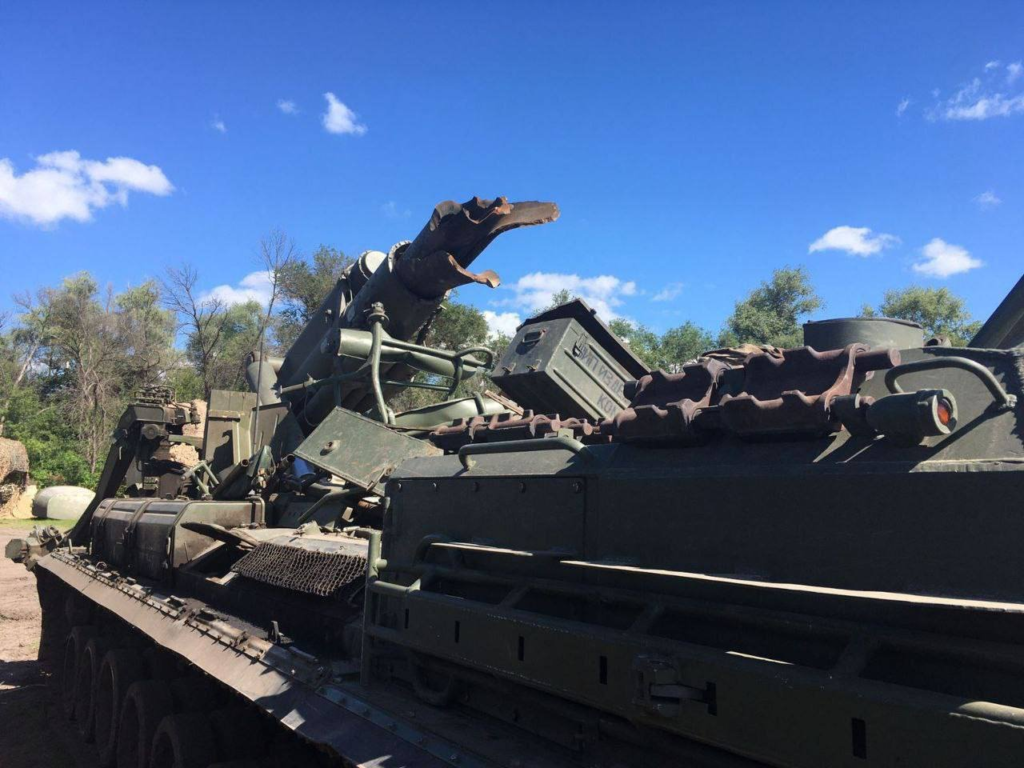
If not for a Spanish company, Russia could have run out of new artillery barrels. Barcelona-based Forward Technical Trade SL supplied at least one radial forging machine to Russia, initially built by the Austrian firm Gesellschaft für Fertigungstechnik und Maschinenbau (GFM), the Insider reports.
Since early 2024, Ukraine has destroyed over 19,000 Russian artillery systems, contributing to a total loss of nearly 30,000 systems over the entire war. The attacks have reduced Russia’s artillery superiority from a 10:1 ratio to about 2:1. Meanwhile, Kyiv and Moscow are turning to drones for faster, more precise strikes, reshaping how the war is fought.
The equipment, valued at $1.3 million, weighs 110 tons and was manufactured in 1983. The transfer reportedly occurred via a Hong Kong-based intermediary, Scorpion’s Holding Group Limited.
GFM denies any direct business ties with either the Spanish supplier or the Hong Kong firm. However, the UK’s Royal United Services Institute (RUSI) confirms that GFM machines are crucial for barrel manufacturing in Russia — and that the Russian defense industry remains entirely dependent on them.
According to US-based expert Pavel Luzin, Russia cannot produce these forging machines domestically. Facing severe shortages, Russian forces have already begun “cannibalizing” old Soviet stockpiles, endangering frontline performance.
Earlier, Ukraine’s Defense Intelligence reported that the West still had not sanctioned 70 Russian companies behind the production of missiles that struck Kyiv’s largest children’s cancer hospital.
The Okhmatdyt strike occurred the same day Indian Prime Minister Narendra Modi met with Russian President Vladimir Putin in Moscow on 8-9 July 2024, calling for a peaceful resolution to the war. While the two leaders spoke of peace, Russian missiles rained down across Ukraine, killing 47 people, including 33 in Kyiv.

Technology is Ukraine’s chance to win the war. This is why we’re launching the David vs. Goliath defense blog to support Ukrainian engineers who are creating innovative battlefield solutions and are inviting you to join us on the journey.
Our platform will showcase the Ukrainian defense tech underdogs who are Ukraine’s hope to win in the war against Russia, giving them the much-needed visibility to connect them with crucial expertise, funding, and international support. Together, we can give David the best fighting chance he has.
Join us in building this platform—become a Euromaidan Press Patron. As little as $5 monthly will boost strategic innovations that could succeed where traditional approaches have failed.
Read also
-
Ukraine’s Intelligence: Explosion disables Russian shadow fleet tanker, carrying 1 million barrels of sanctioned oil
-
“Limpet mines are the new sanctions”: Ukraine is targeting Russia’s shadow oil fleet, says former Royal Navy officer
-
UK sanctions Russian generals and military lab for chemical warfare in Ukraine
-
Sanctions hit harder than bombs: Russian courts reveal systemic failure in weapons supply
Ukraine says it will not conceal espionage despite ongoing dialogue after catching Chinese spies targeting missile secrets
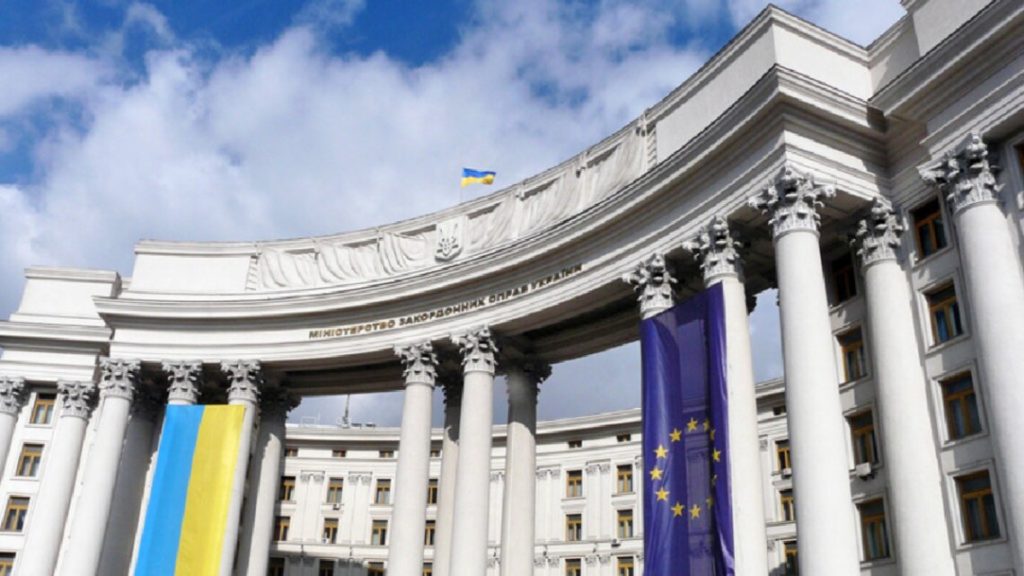
Stability in Ukraine is in China’s own interest, and Beijing holds the most powerful levers to influence Moscow and urge Russian ruler Vladimir Putin to end the war, Ukrainian Foreign Ministry spokesperson Heorhii Tykhyi says, according to UkrInform.
In July 2025, European Commission President Ursula von der Leyen warned that the future of the EU’s policy toward China would rely on Beijing’s involvement in supporting Russia’s war efforts. Moscow is dependent on supplies of Chinese components for both tactical and long-range drones. This allows Moscow to narrow the technological and production gap with Ukraine in the drone sector. The cooperation poses a threat to the European Union, said von der Leyen.
Tykhyi calls on China, which has been called the main sponsor of Russia’s war, to view Ukraine not merely as another European country, but as a future member of the European Union. He emphasizes that “Ukraine–China relations are ongoing, dialogue exists.” Kyiv is also openly responding to instances of Chinese citizens participating in combat on Russia’s side or engaging in acts of industrial espionage.
For instance, on 9 July, Kyiv detained two Chinese nationals, accused of attempting to steal classified documentation on Ukraine’s Neptune anti-ship missile system. The weapon that sank Russia’s flagship Moskva.
The younger suspect studied at a Kyiv technical university until 2023, when he was expelled for poor grades. Instead of returning to China, he stayed in Ukraine. The SBU suggests he used his remaining contacts to target someone with access to advanced weapons development.
“Recently, Chinese nationals were detained for gathering sensitive information about Ukrainian weapons. These facts are not being concealed,” the spokesperson says, adding that such incidents damage bilateral relations, and Ukraine cannot ignore threats amid all-out war.
Earlier, Chinese Foreign Minister Wang Yi told a senior EU diplomat that China “cannot accept” Russia’s defeat in the war against Ukraine, arguing that such an outcome would allow the US to focus its foreign policy on Beijing. However, this does not fully indicate that Beijing is focused on Moscow’s victory.
Read also
-
Ukraine catches Chinese spies trying to steal secrets of missile that sank Russia’s flagship
-
Moscow mass-produces drones—China pretends it’s not helping
-
China may soon build large-scale facilities in Russia‑occupied Crimea
-
China dissects Russia’s mistakes in Ukraine while building world’s largest naval arsenal for potential Taiwan war
Ukraine’s drone secrets lifted by EU firms promising fake battlefield tests
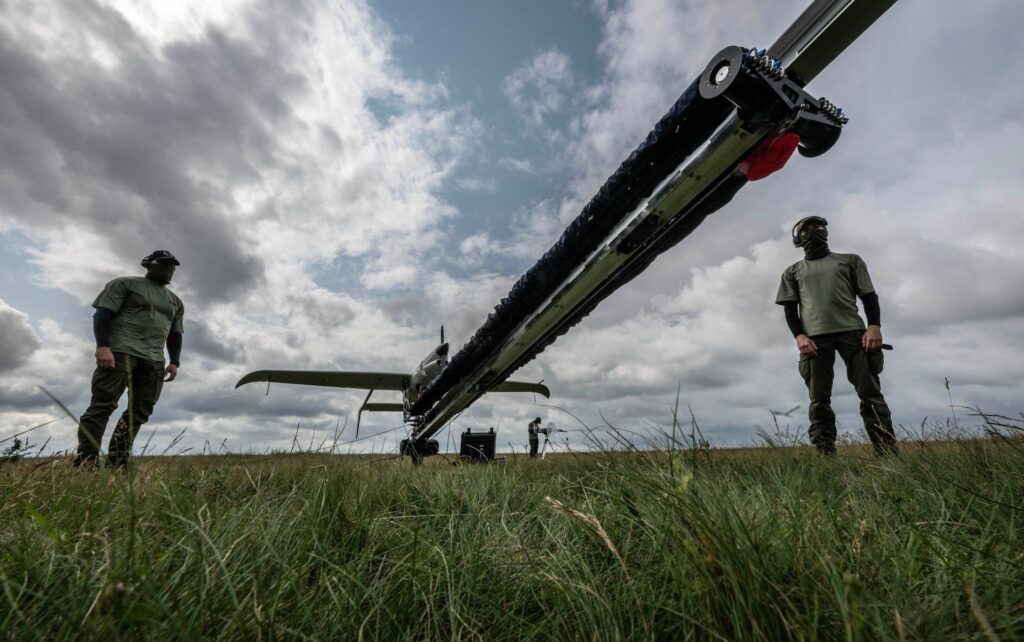
European firms stole drone secrets from a top Ukrainian manufacturer while falsely claiming their own UAVs were tested in combat, according to Skyeton CEO Roman Knyazhenko. He did not name the specific European companies allegedly involved. Skyeton’s flagship Raybird drone has flown over 350,000 combat hours, The Telegraph says.
European drone makers accused of copying, then vanishing
In an interview with The Telegraph, Knyazhenko said some European manufacturers approached Skyeton under the pretense of cooperation. However, then they used the meetings to extract technical details and even plagiarized phrases from company materials.
“Sometimes I open presentations of other aircraft from Europe, and I see literally my own words, without any change,” he told the outlet.
He said firms conducted only a few drone flights far from the front line — such as in Lviv in western Ukraine — and still claimed their systems were “combat tested.” These misleading claims allowed them to secure government contracts worth billions, diverting funds from proven Ukrainian systems.
“They’re investing in technology that’s actually fake. In the end, you will have nothing,” Knyazhenko said, warning that the deception not only wastes money but also harms Ukraine’s war effort.
Skyeton says Raybird drones built under battlefield pressure
Skyeton, formerly focused on ultralight aircraft, now works directly with the Ukrainian army. CEO Roman Knyazhenko said roughly half the drone’s components have been replaced in recent years to enhance radar evasion and endurance. The system can reportedly fly 2,500 kilometers and stay airborne for up to 28 hours with various payloads. He added that pressure on engineers is extreme, with repairs often needed overnight to avoid leaving brigades without support.
“In peacetime, you would say a couple of weeks or a month. But right now, you have one night,” Knyazhenko said. “Because if you do not do it in one night, tomorrow the enemy will try and approach us and we will not have aircraft in the air, so we will have casualties.”
Poor foreign parts and legal limbo slow Ukrainian production
Skyeton says it had to start building more parts itself after receiving faulty imports. Knyazhenko cited one shipment of gimbal cameras where half didn’t work. Test logs showed they failed before leaving the factory, he said. The supplier denied responsibility. Legal action, Knyazhenko added, would take years — while frontline units went without equipment.
“Every day of delay will cost us millions,” Knyazhenko said, noting Skyeton’s strict government contracts and the constant demand from Ukrainian brigades.
Rapid evolution defines Ukraine’s drone edge
Skyeton says it constantly refines its drones for real combat conditions. Engineers, it claims, adjusted launch systems and designed UAVs that can take off from puddles within minutes. Knyazhenko said key technologies may become obsolete in two weeks.
“Three years here feels like 20 years in peace time,” he said.
He warned that visiting a Ukrainian factory doesn’t mean firms can replicate the work. “It’s the same story as building a BMW from scratch. It takes years,” he said.
In Foreign Affairs, former Biden officials Jon Finer and David Shimer said most countries — including the US — now lag behind Ukraine in drone warfare. Knyazhenko added that instead of rebuilding systems like the Raybird, Western countries should simply fund Ukrainian production abroad.
Read also
-
NATO allies test German AI drone as Ukraine already destroys Russian equipment with it
-
China helped build the drones now hitting Ukraine—Bloomberg traces the parts
-
One Ukrainian drone keeps smashing Russia’s top war factories—so Germany’s paying for 500 more
-
First-of-its-kind strike: Ukraine destroys prized Nebo-M radar system in Crimea using sea-launched bomb drones (video)